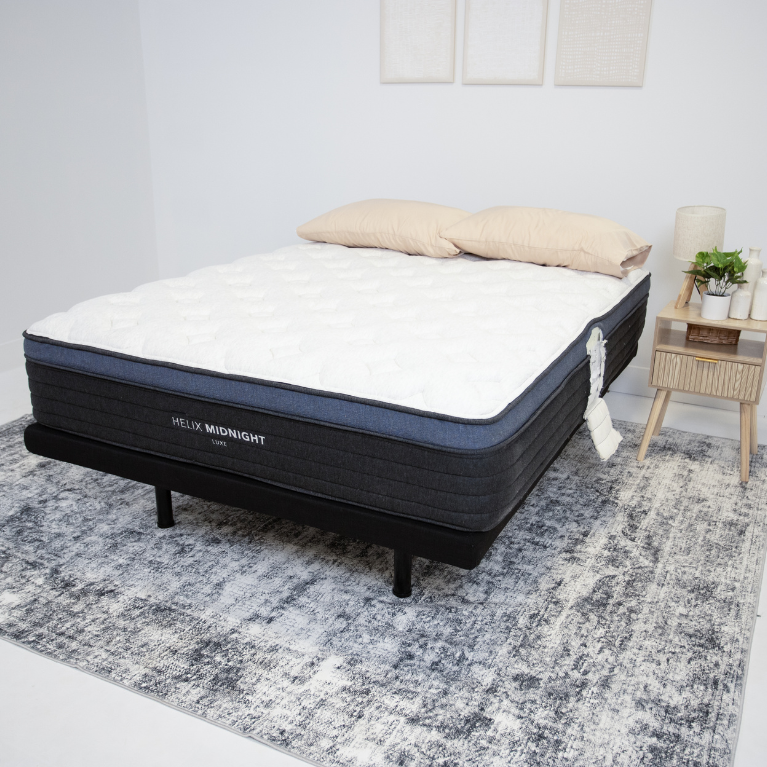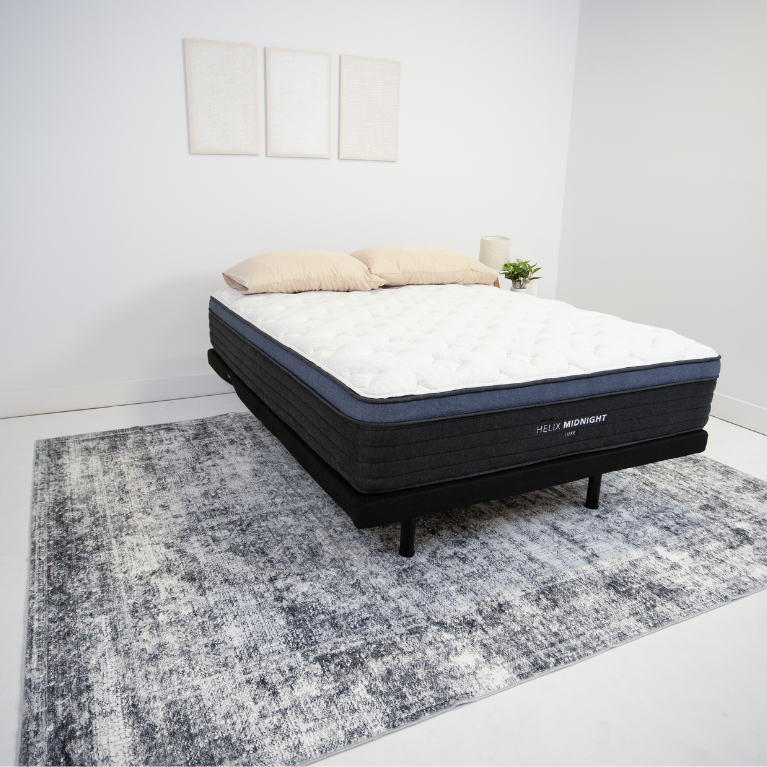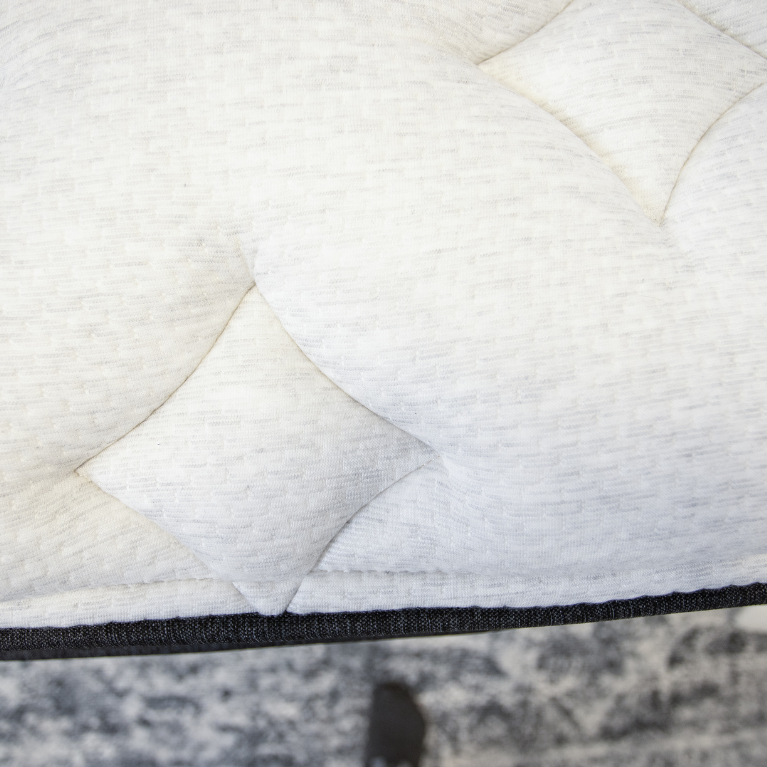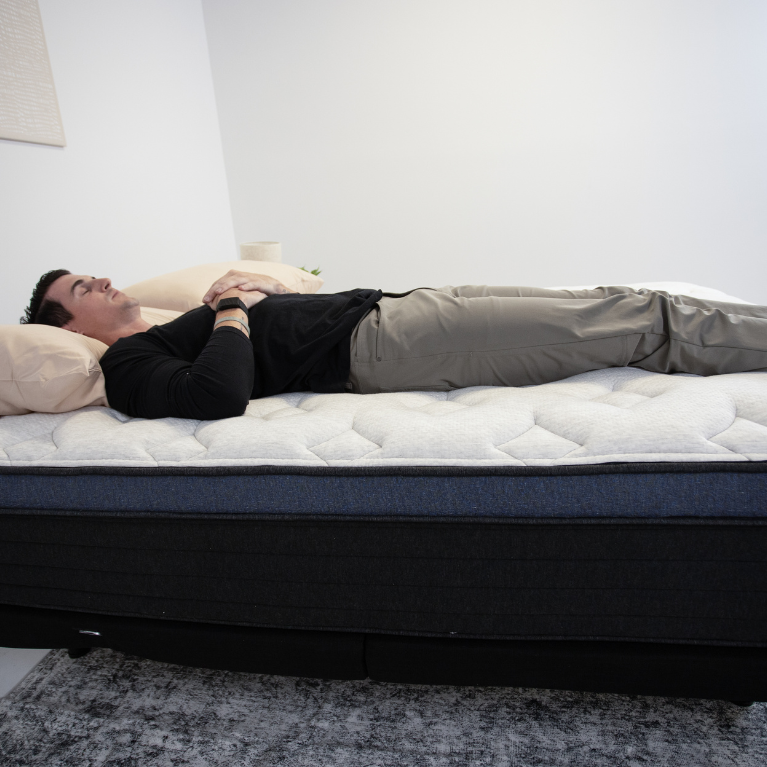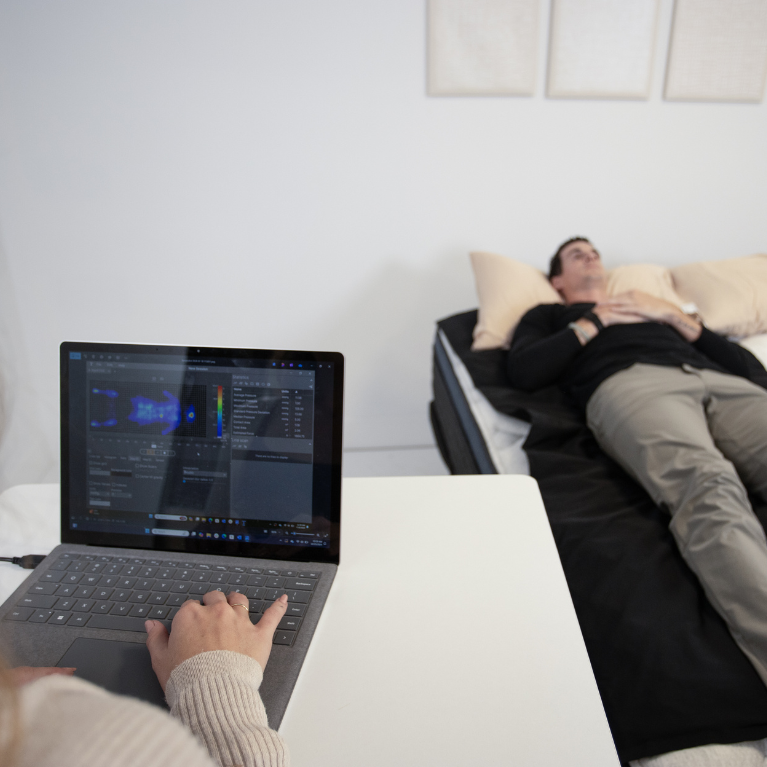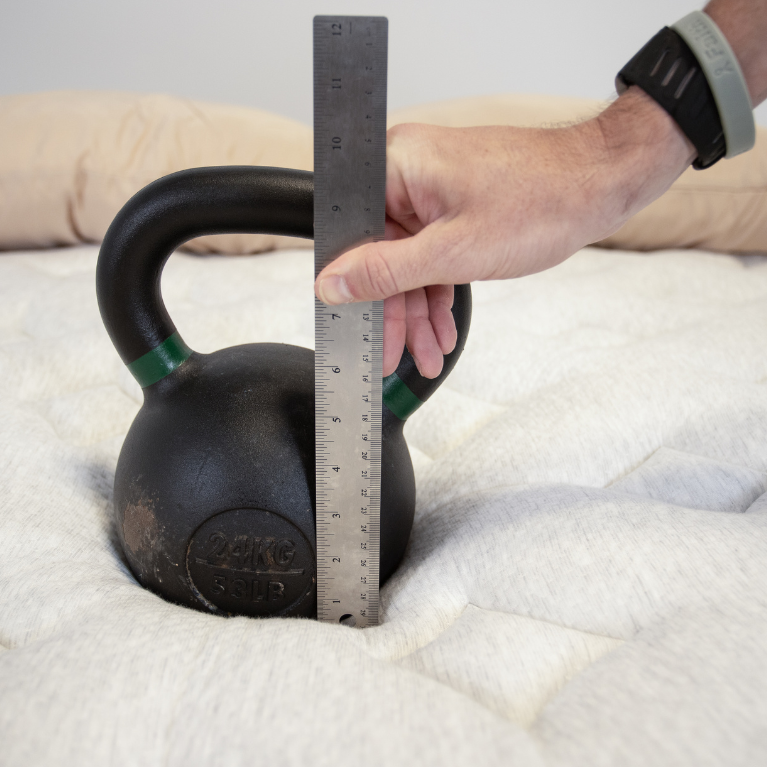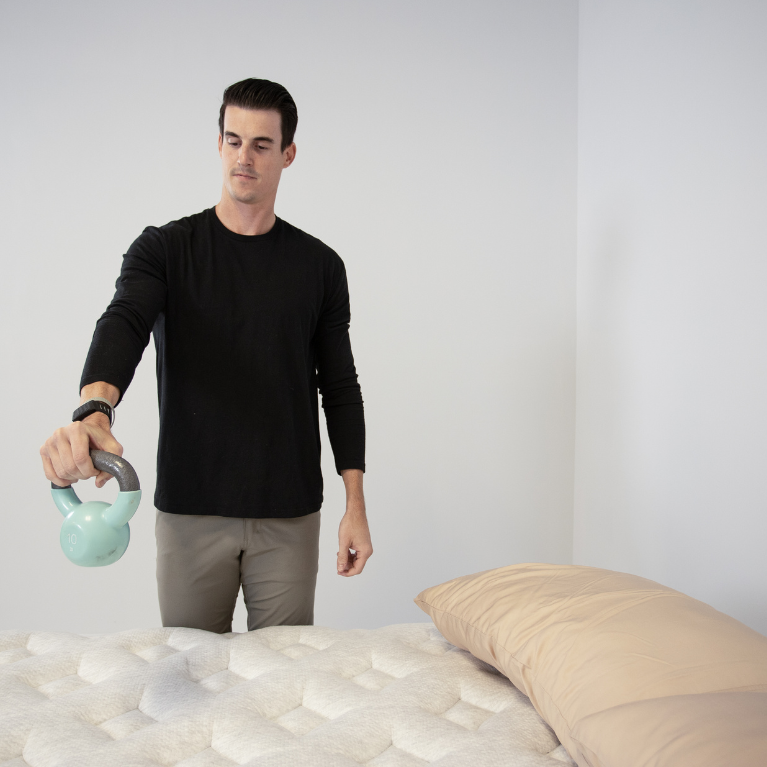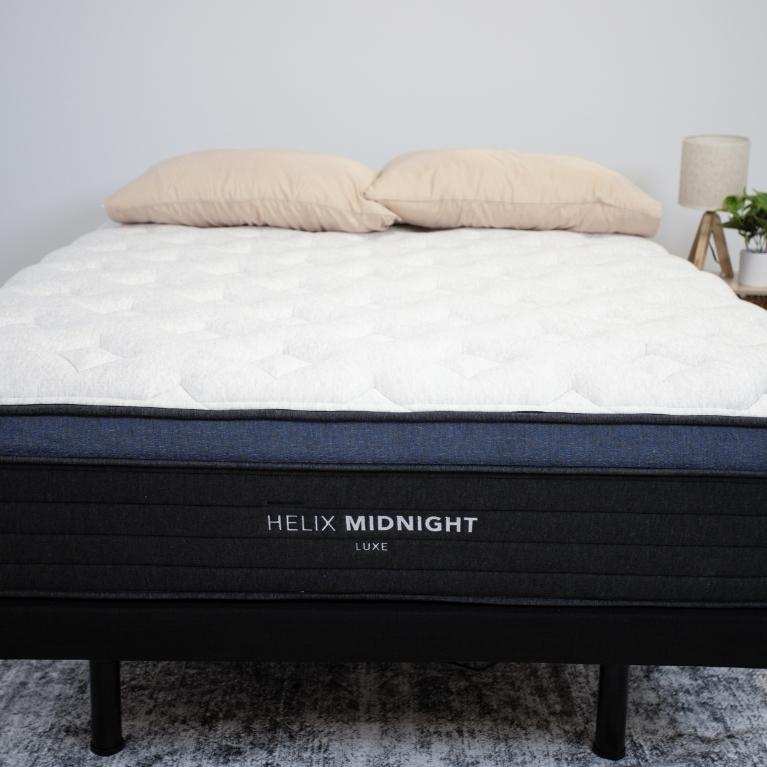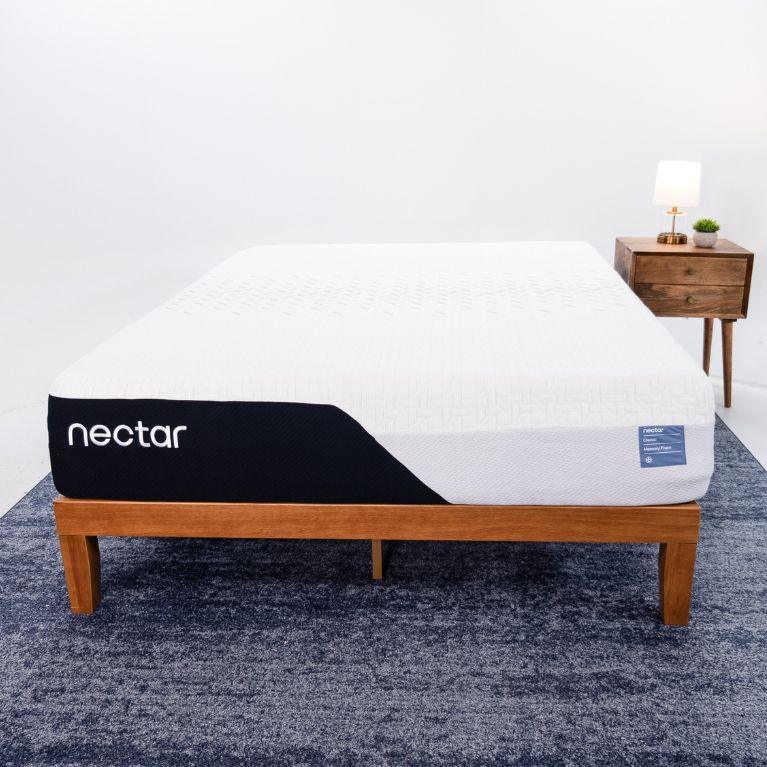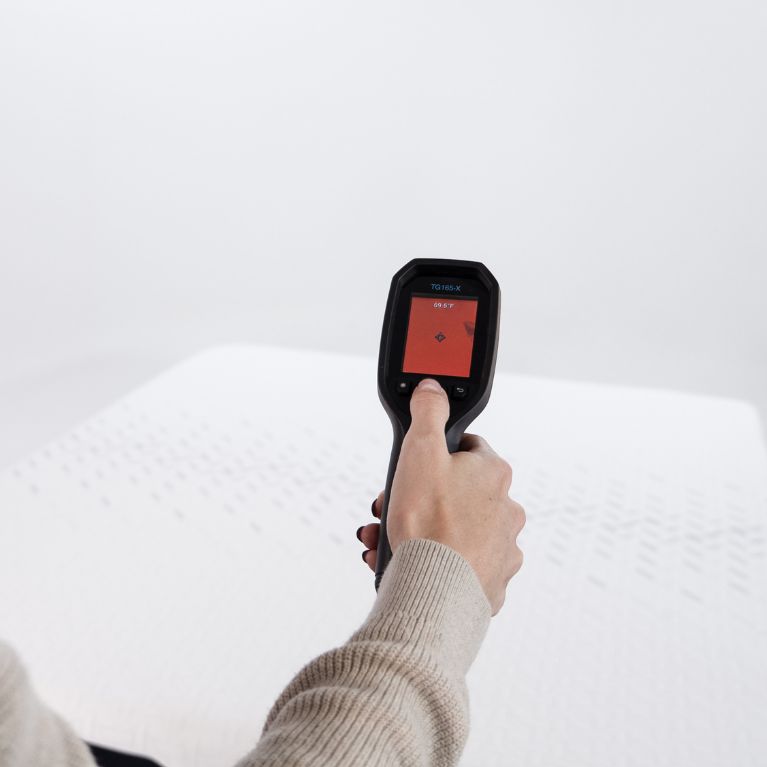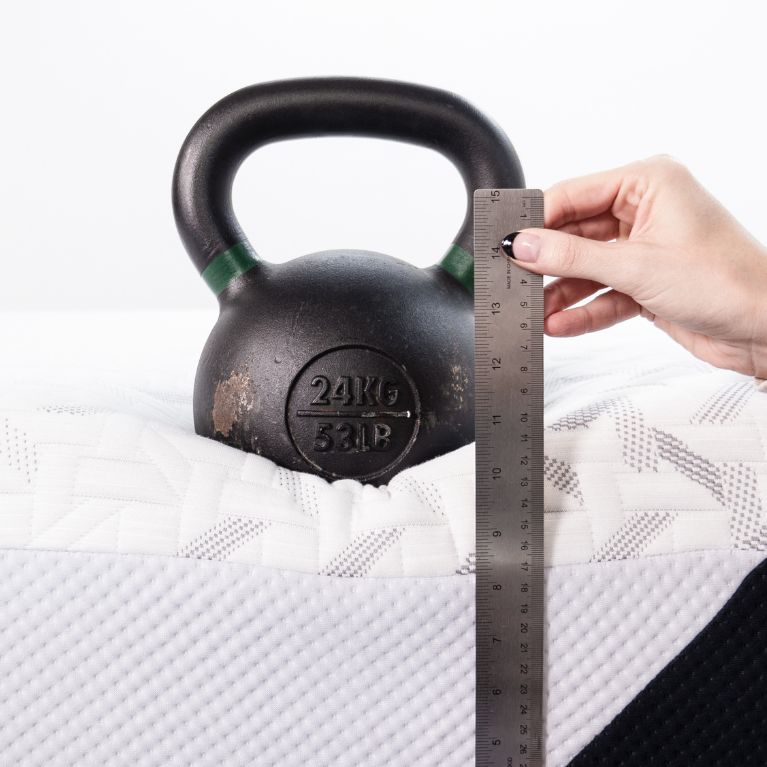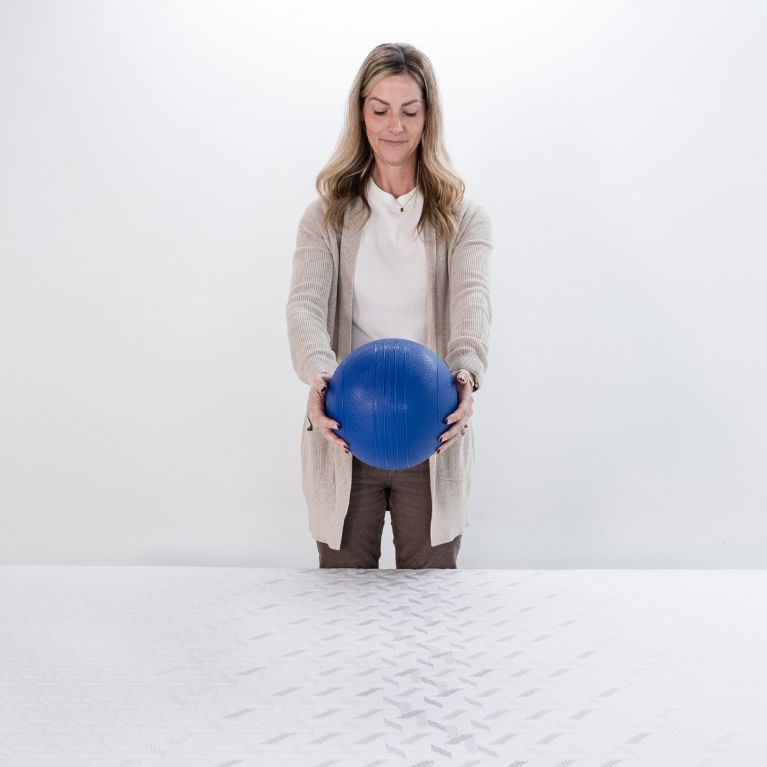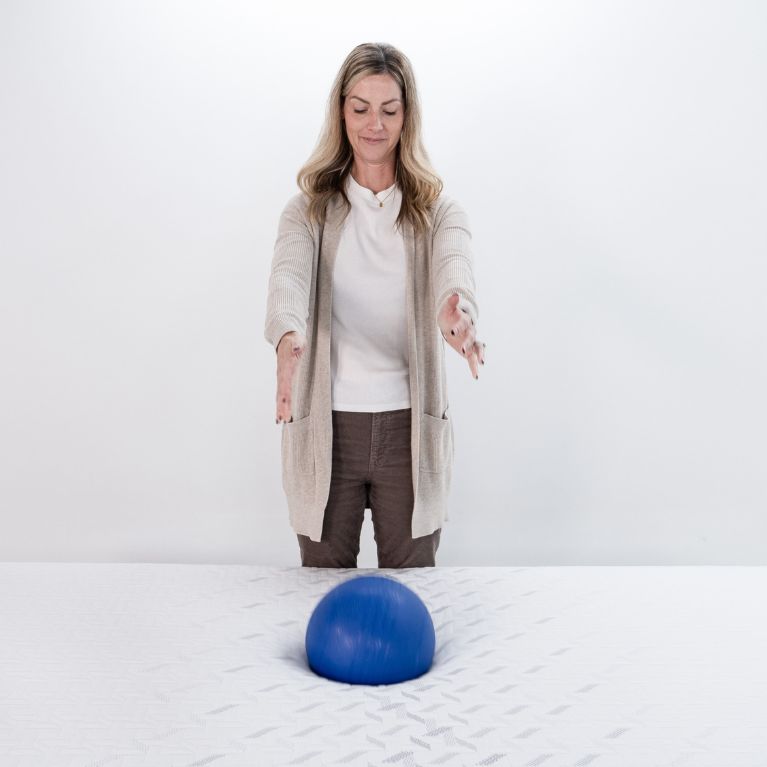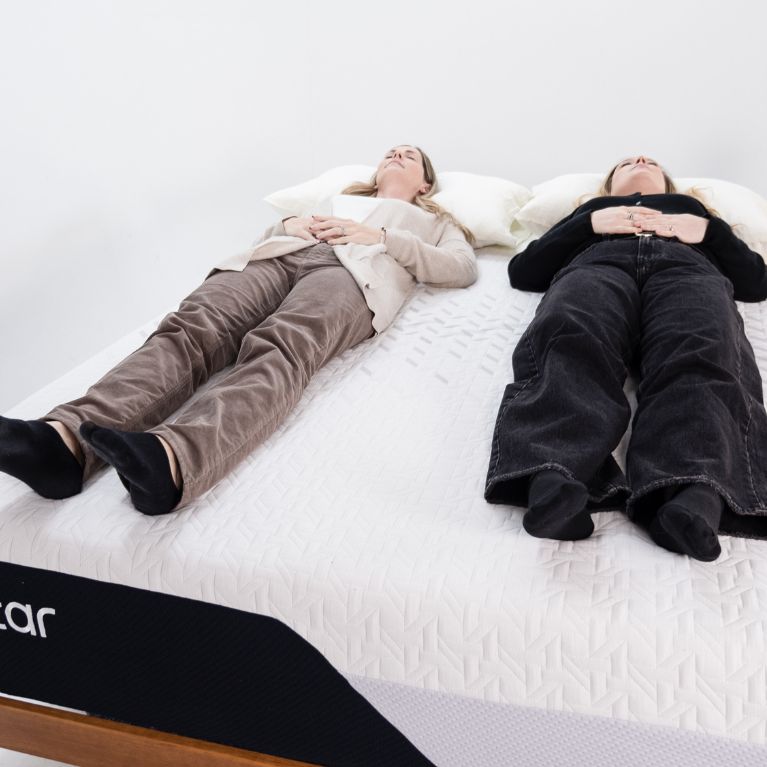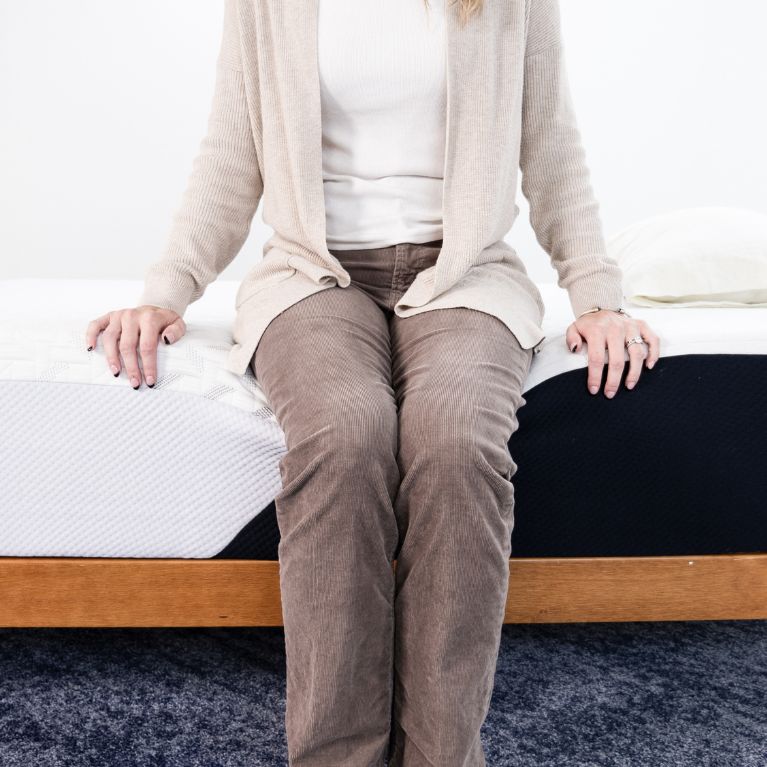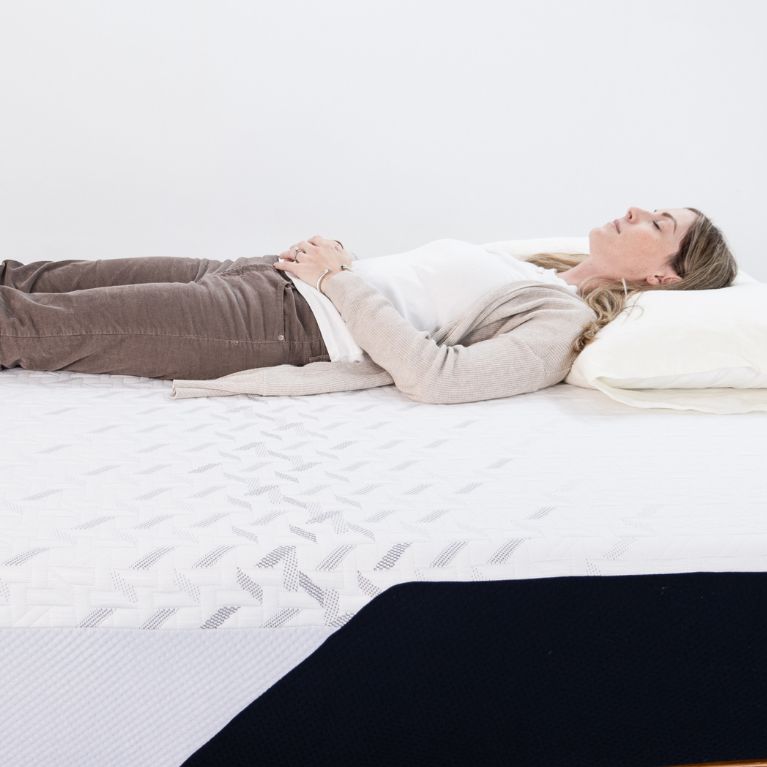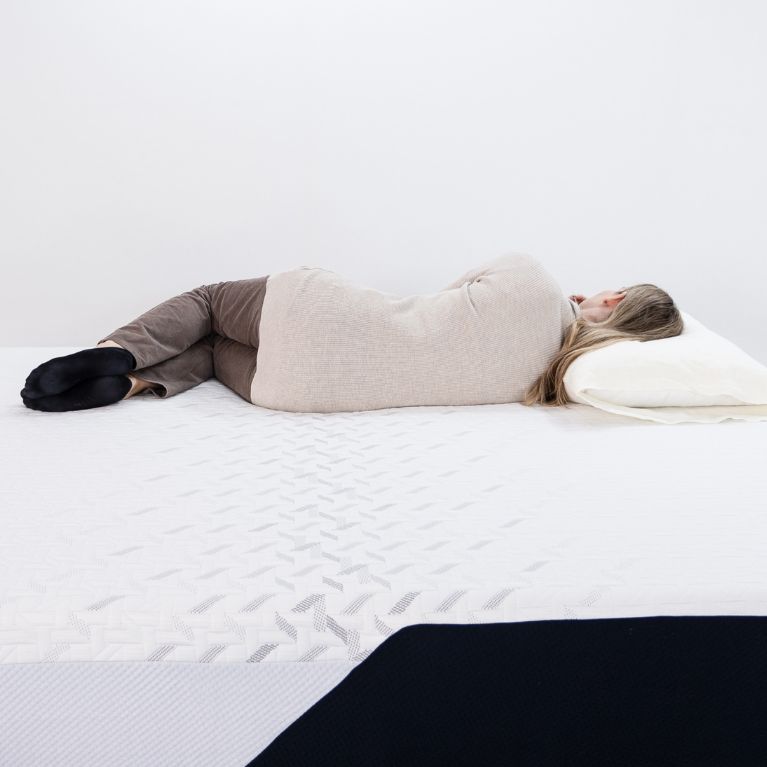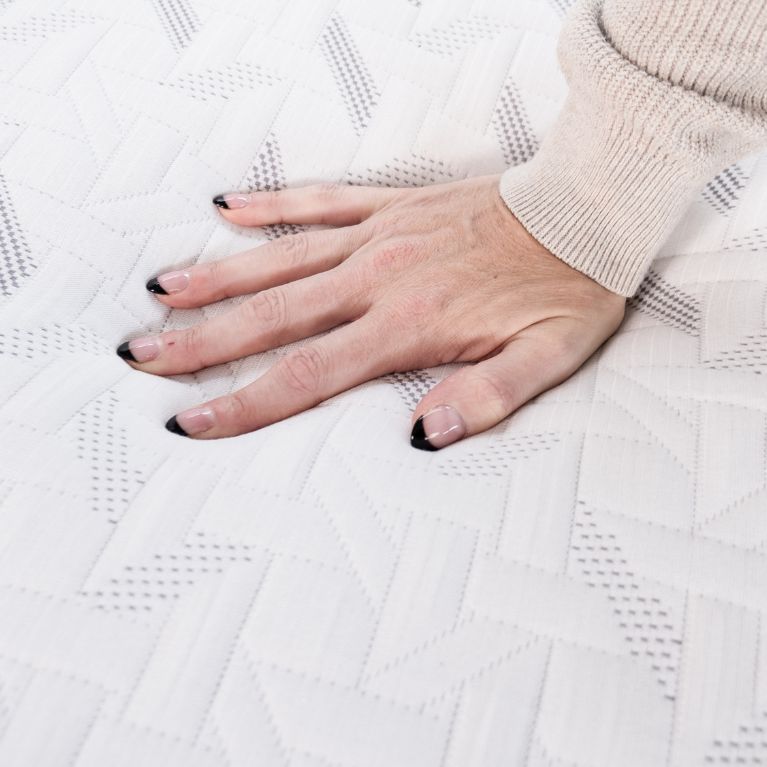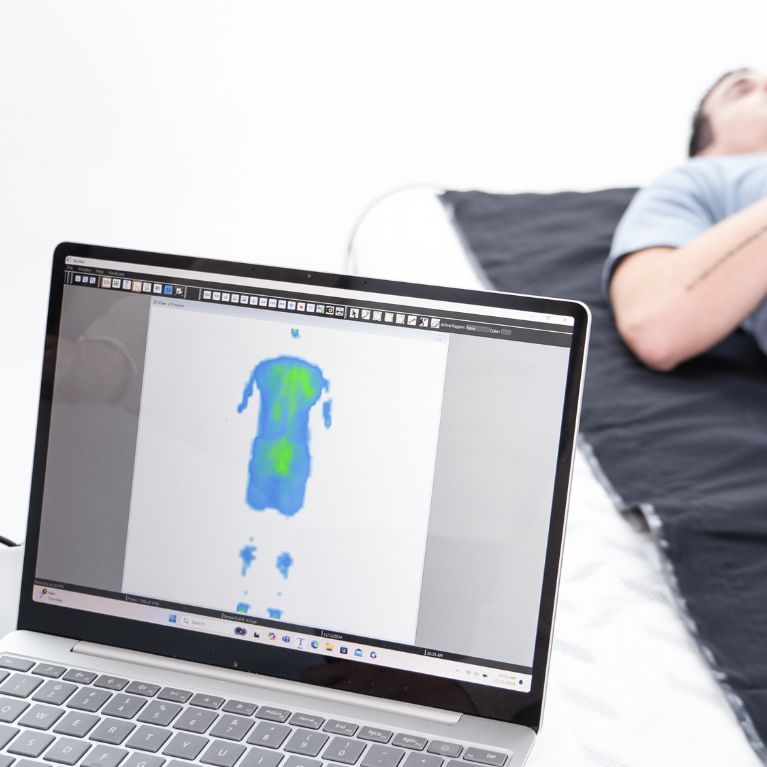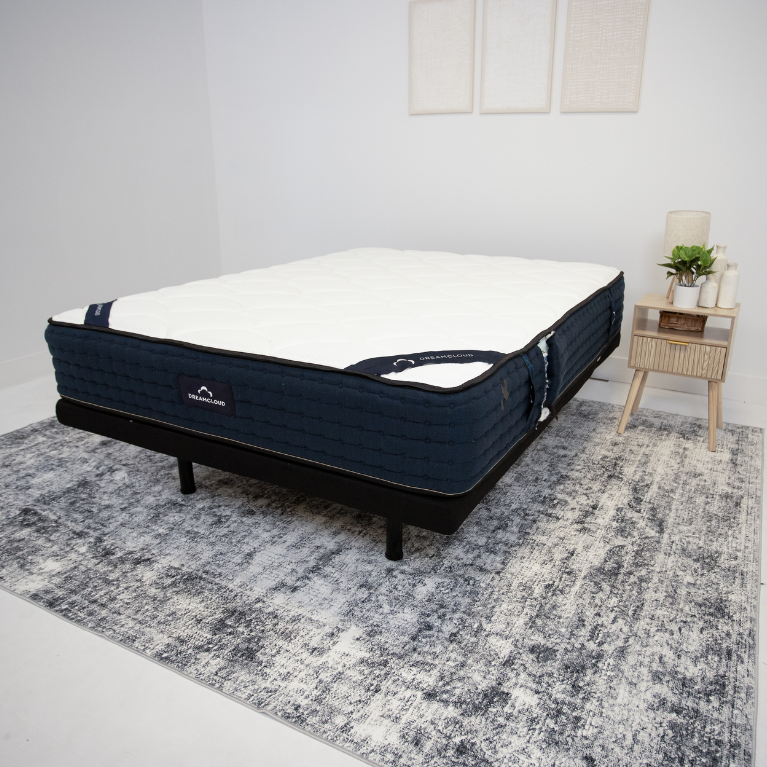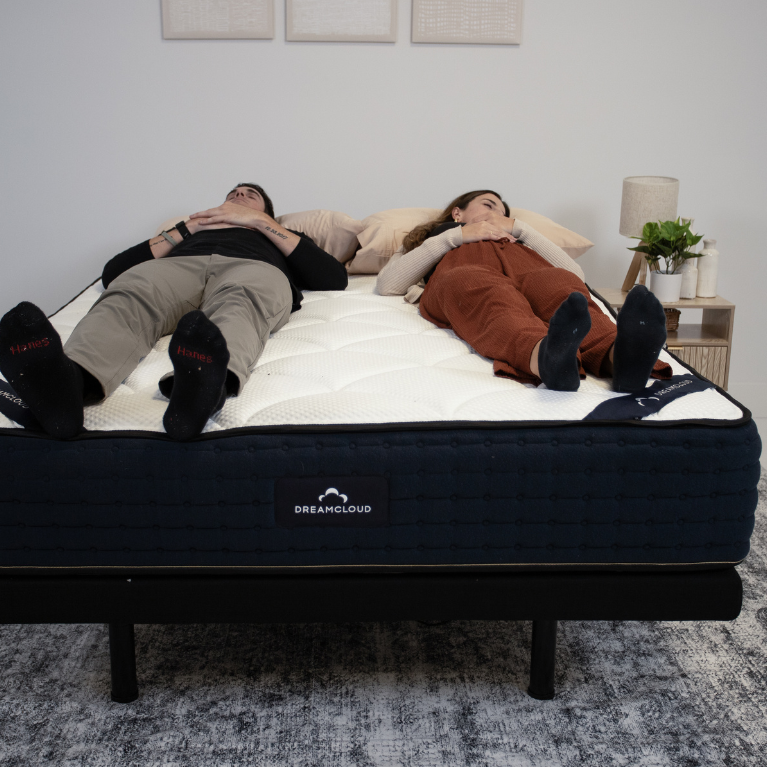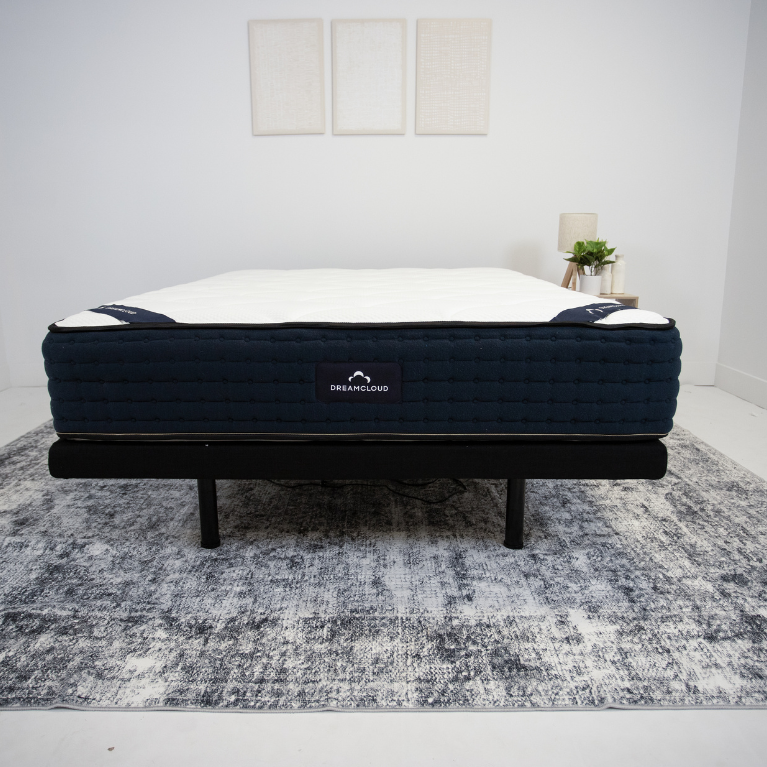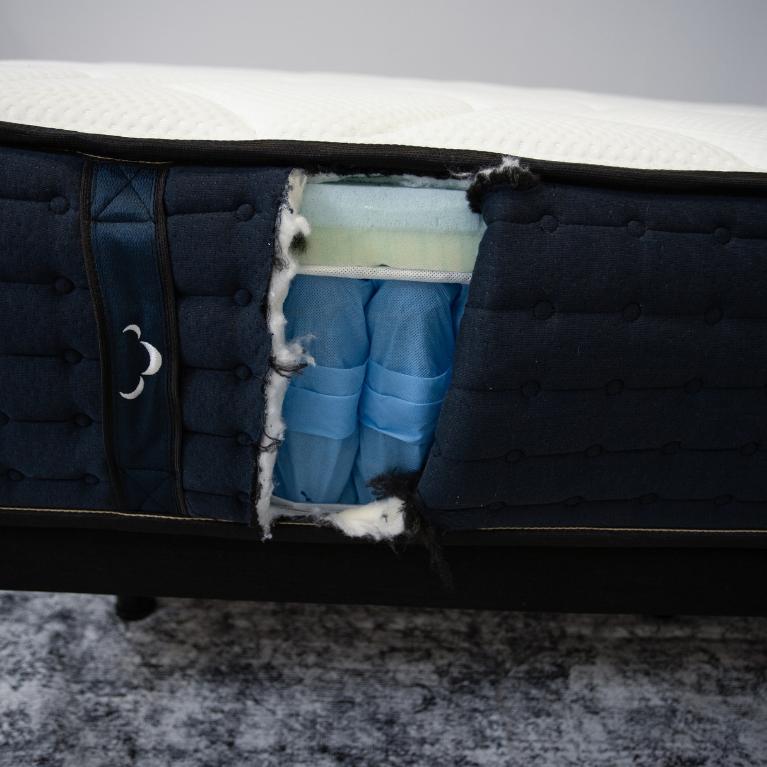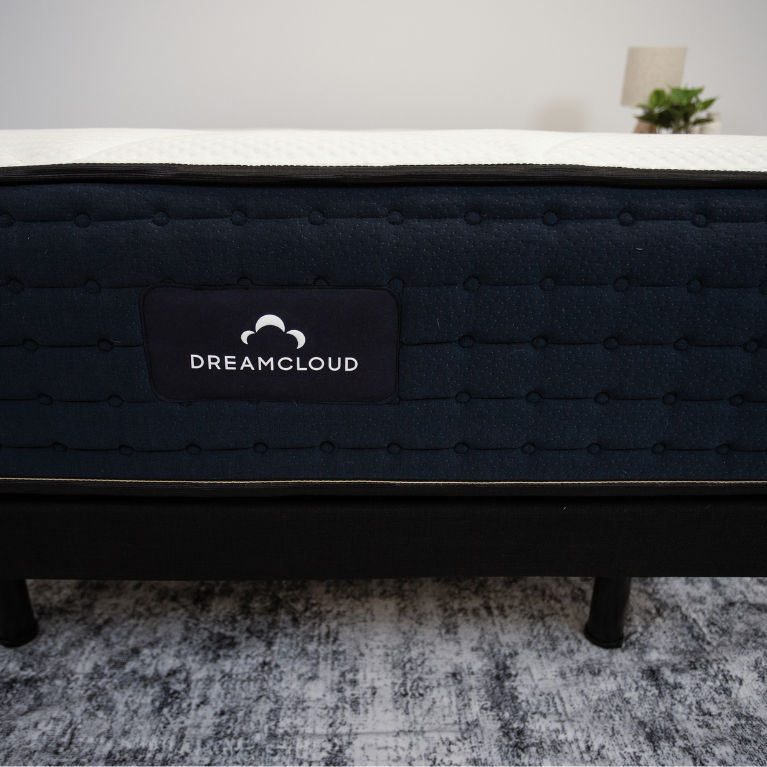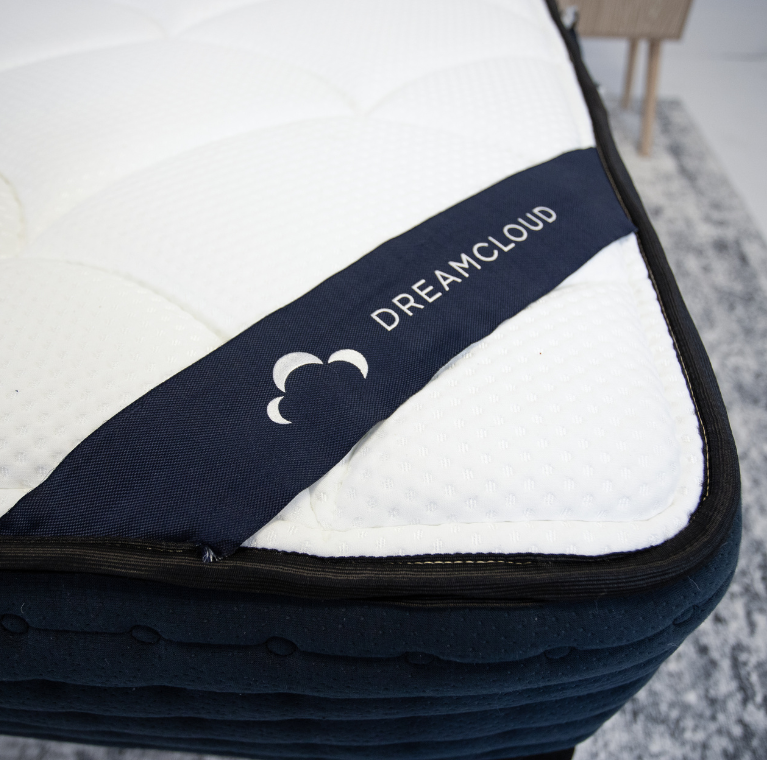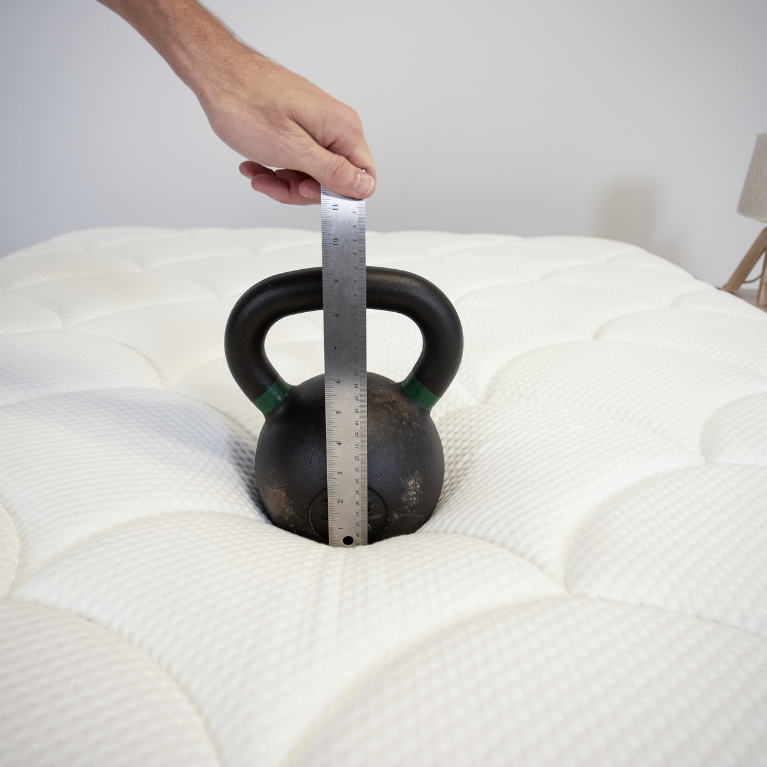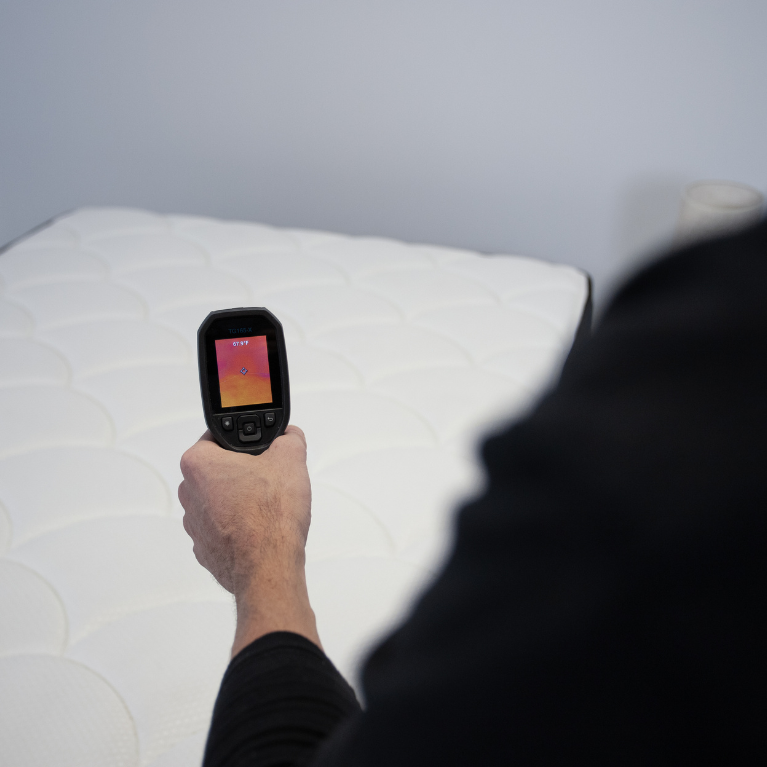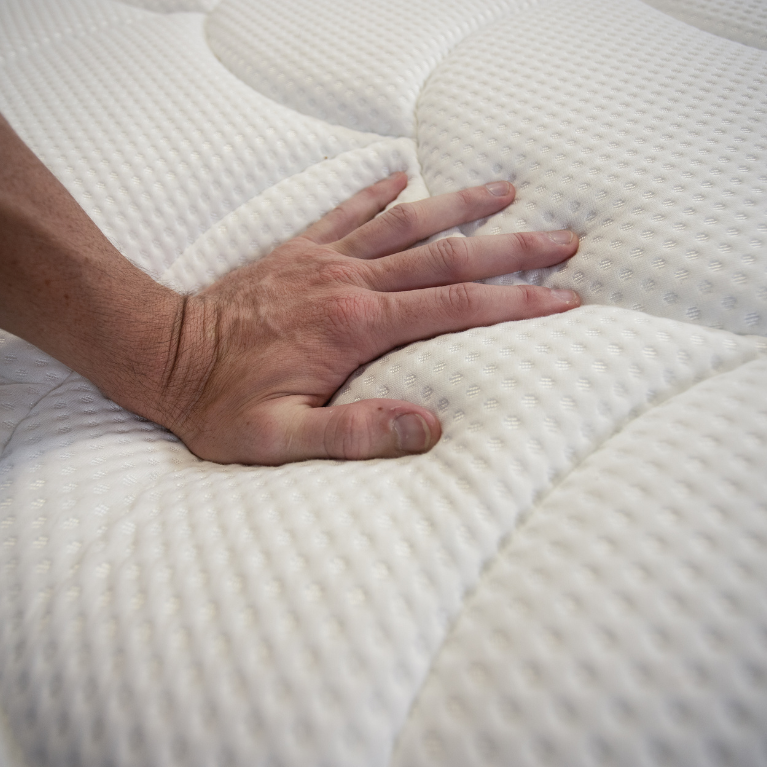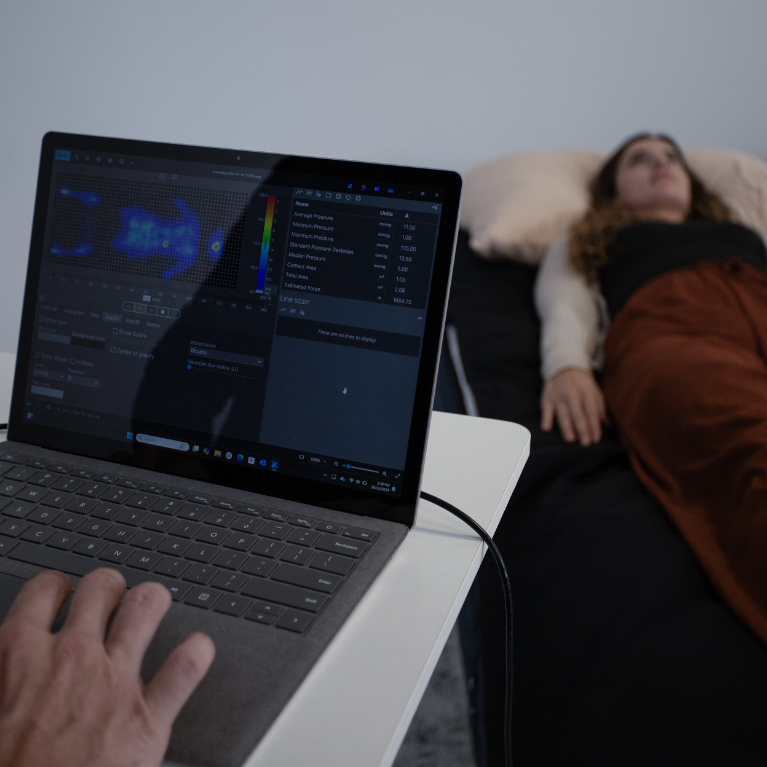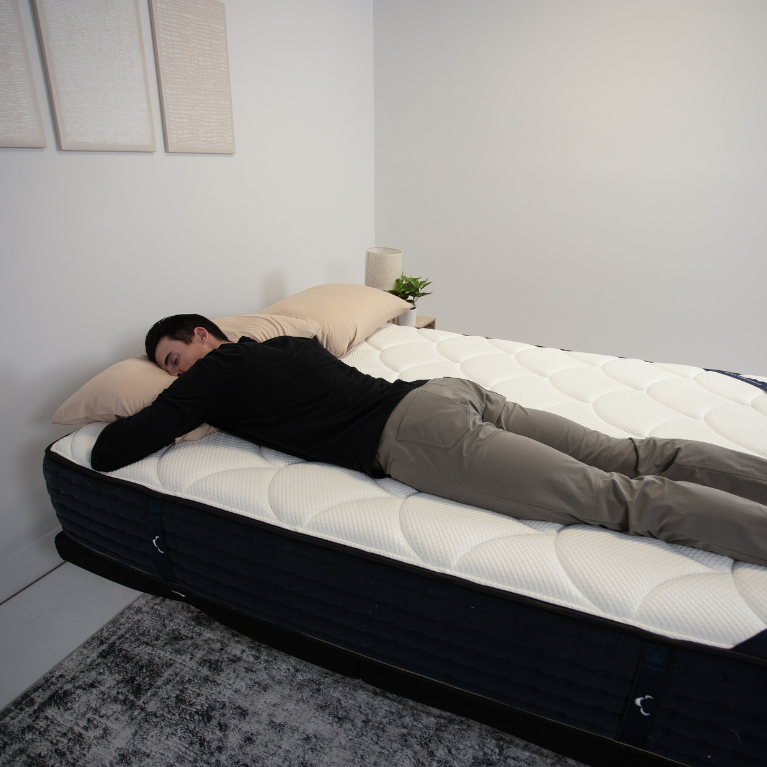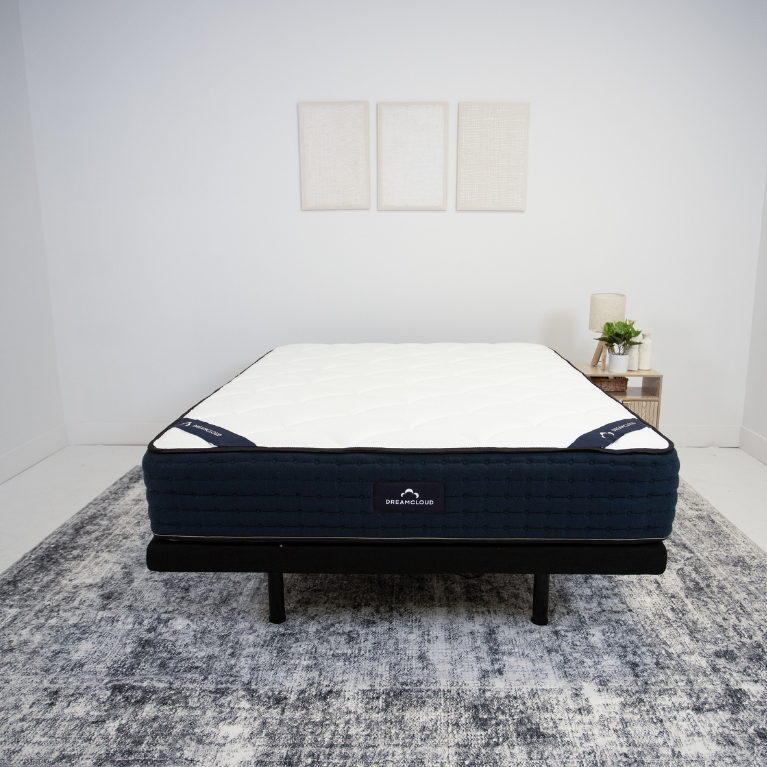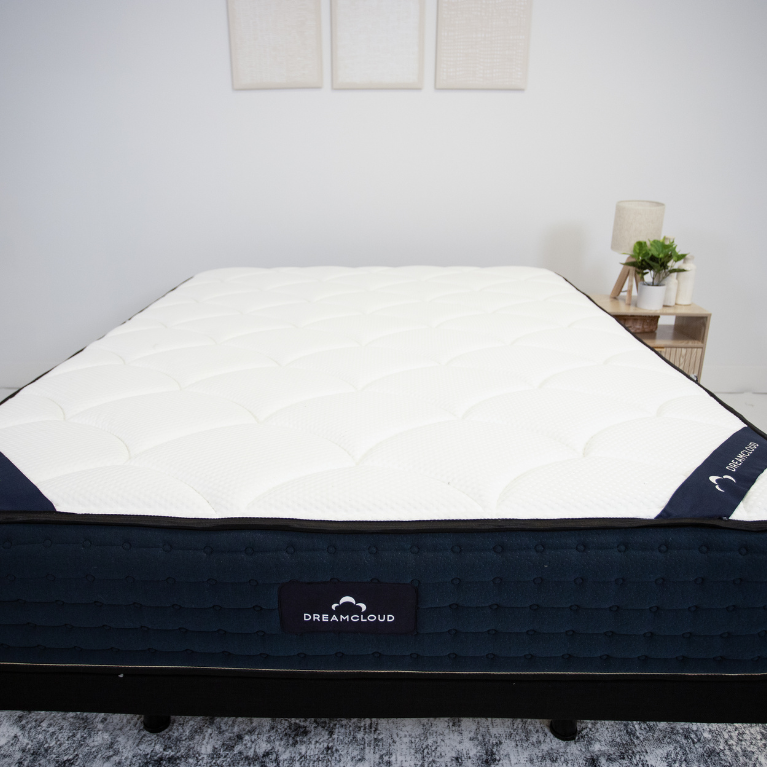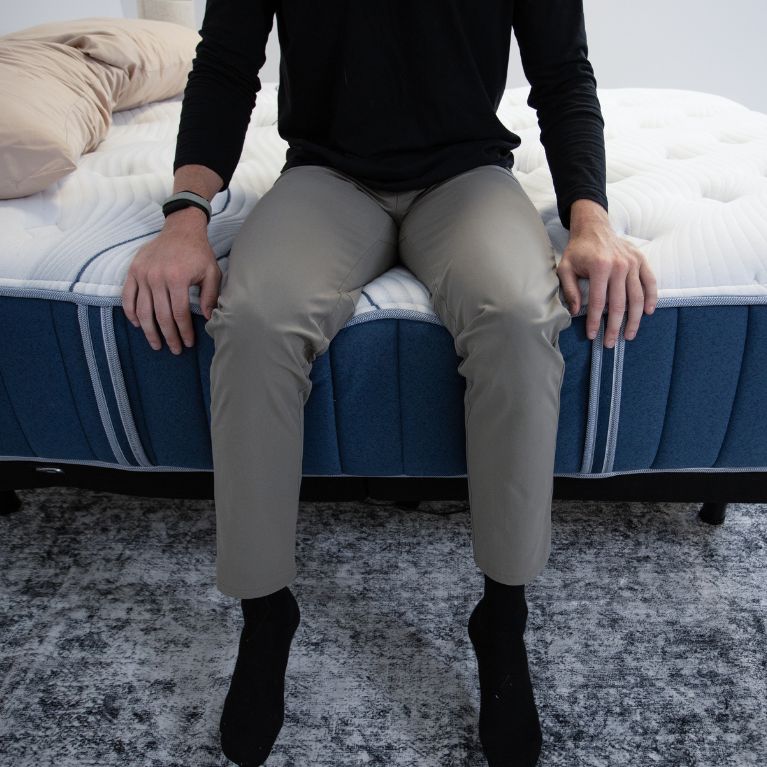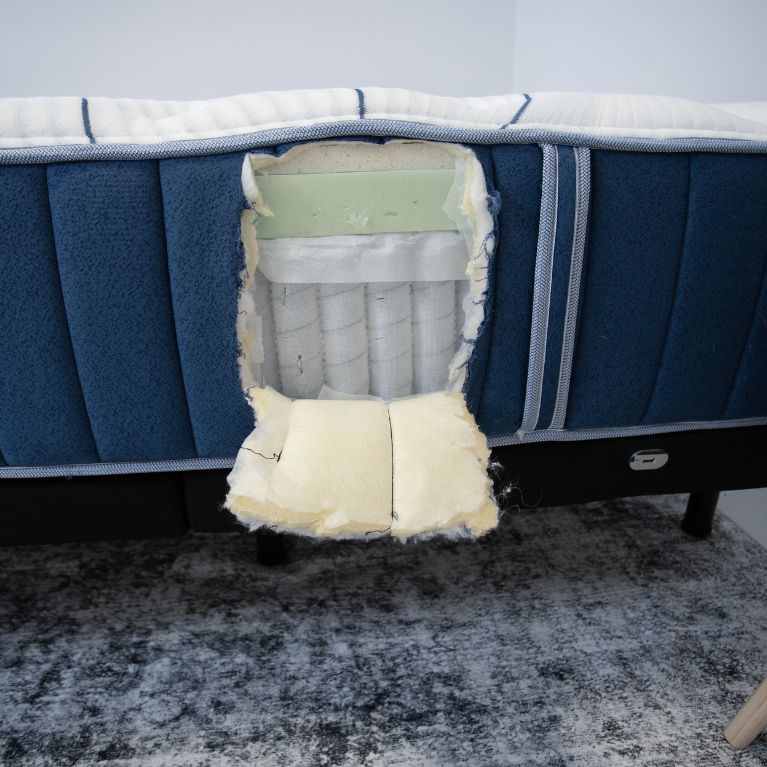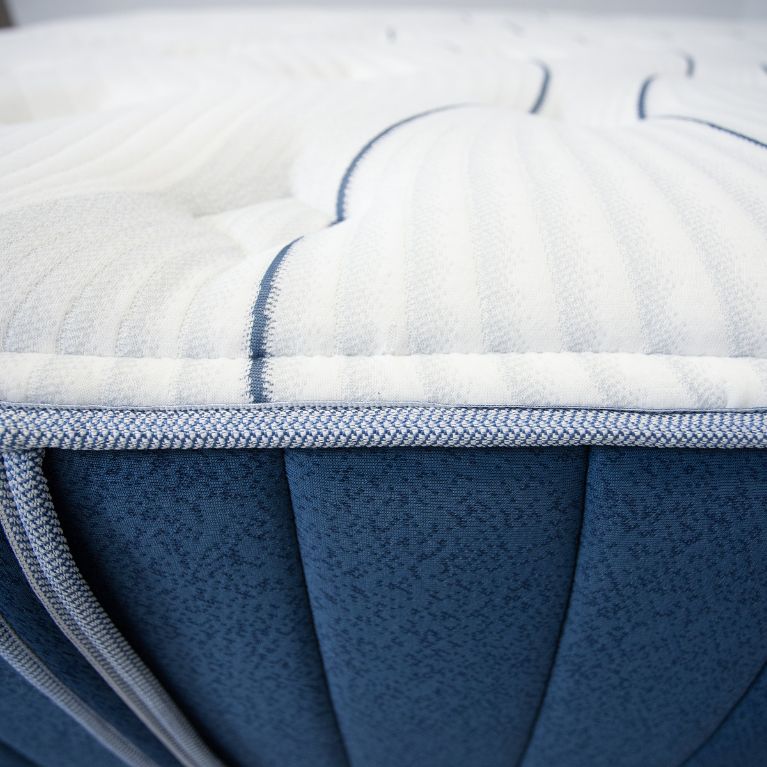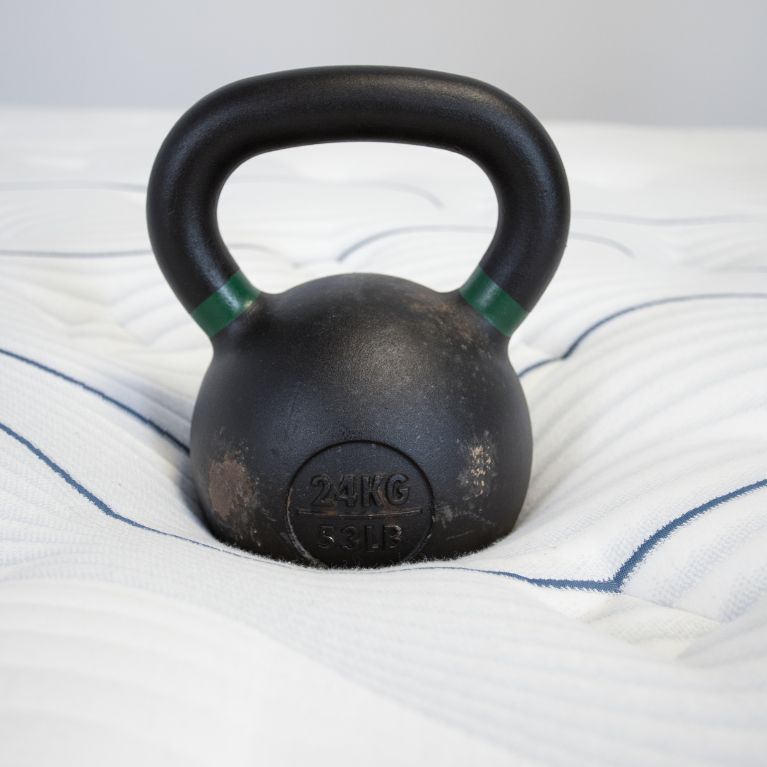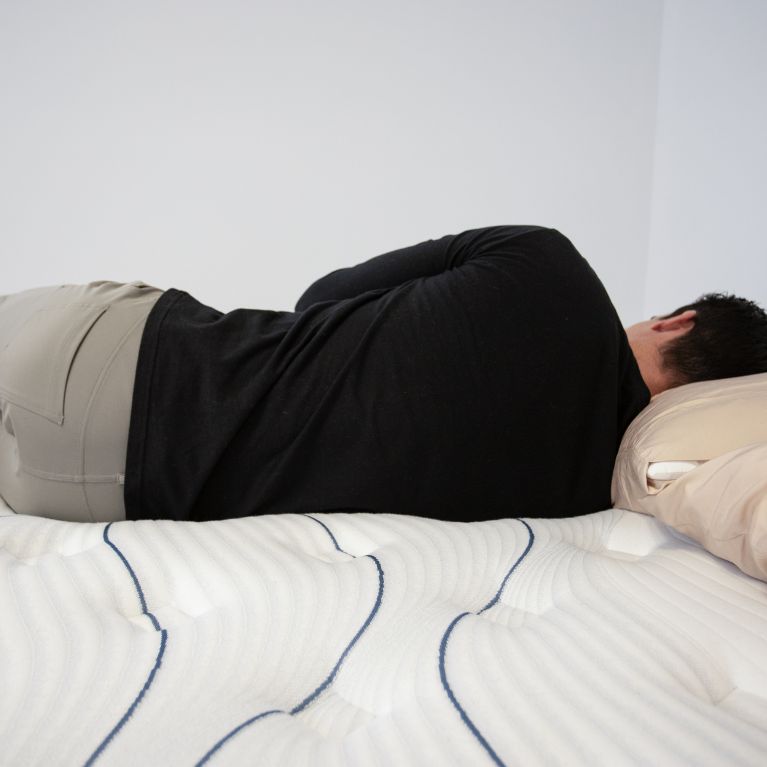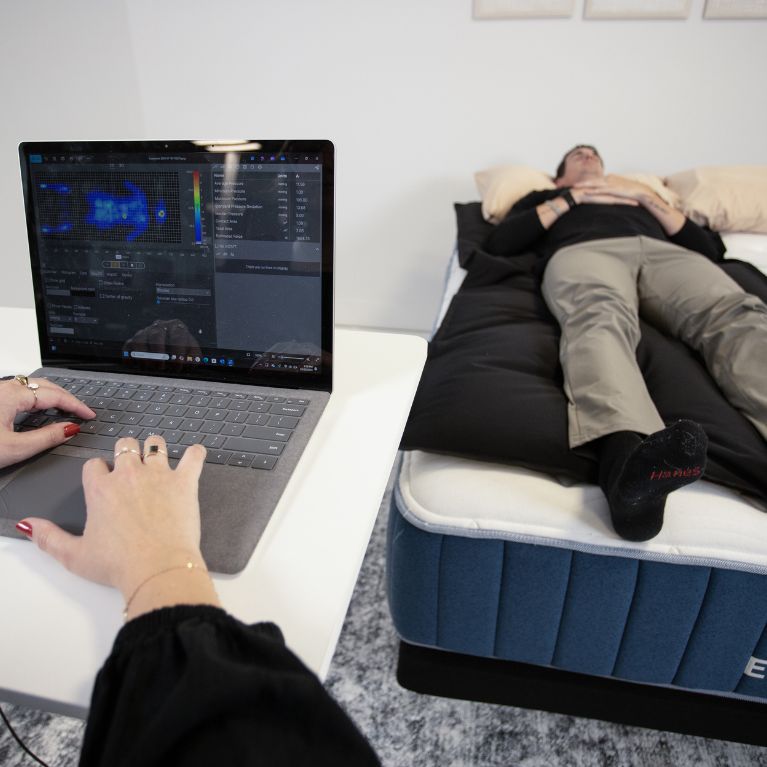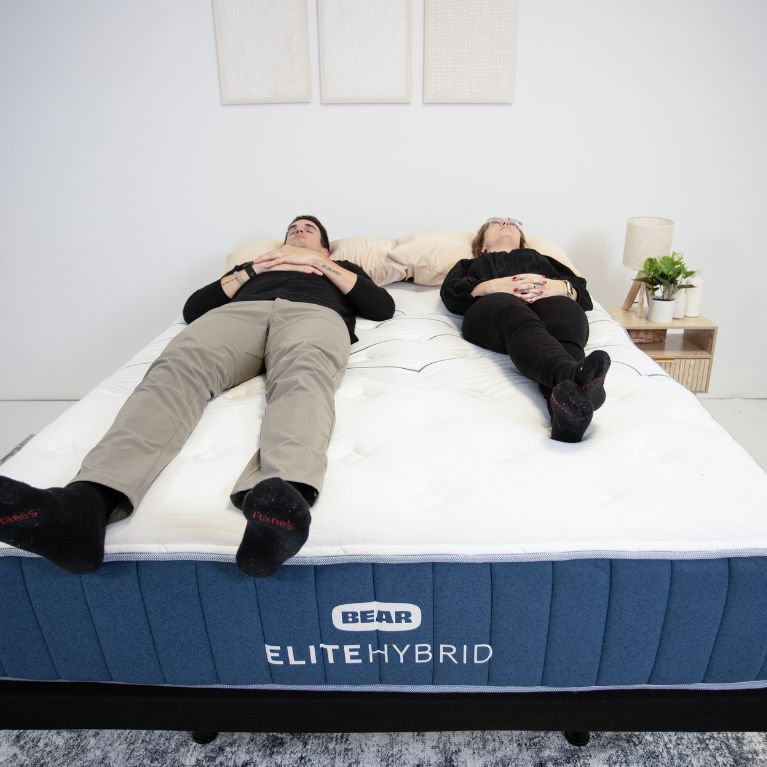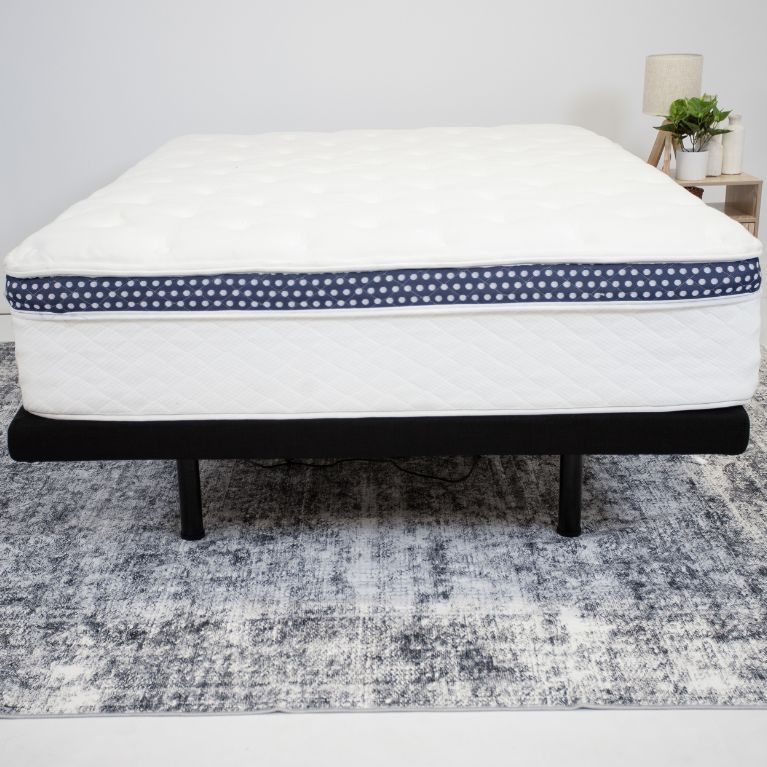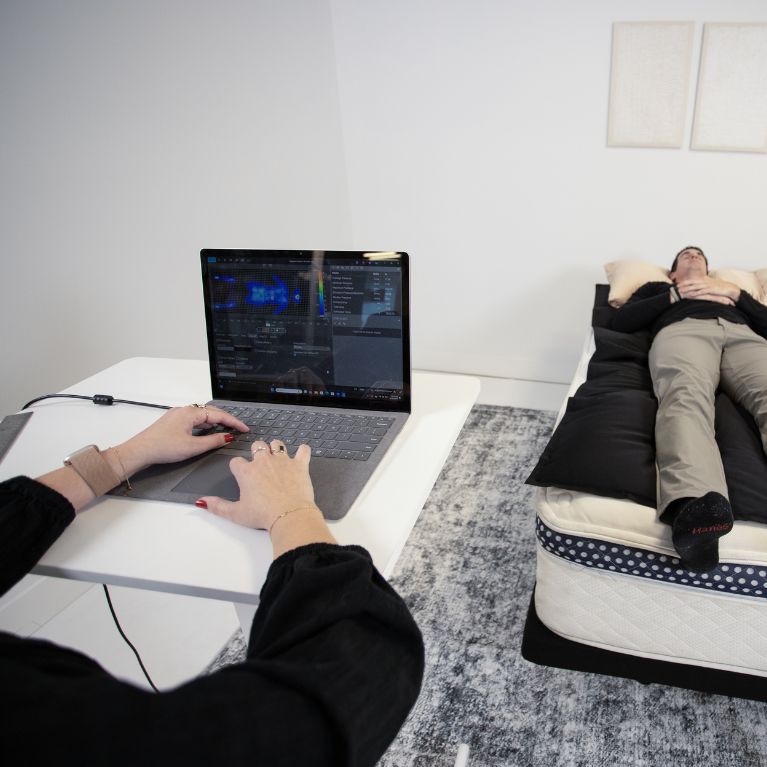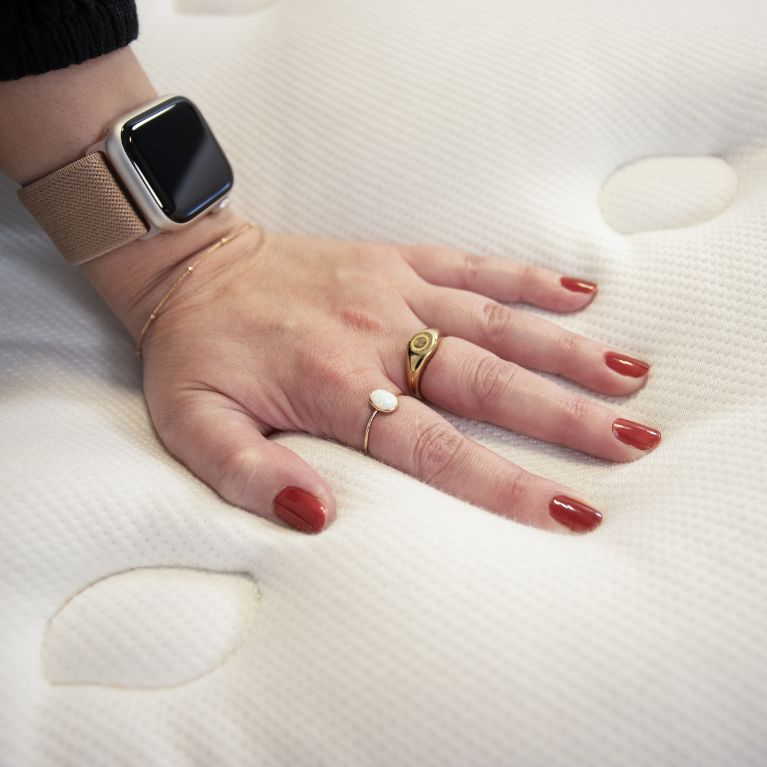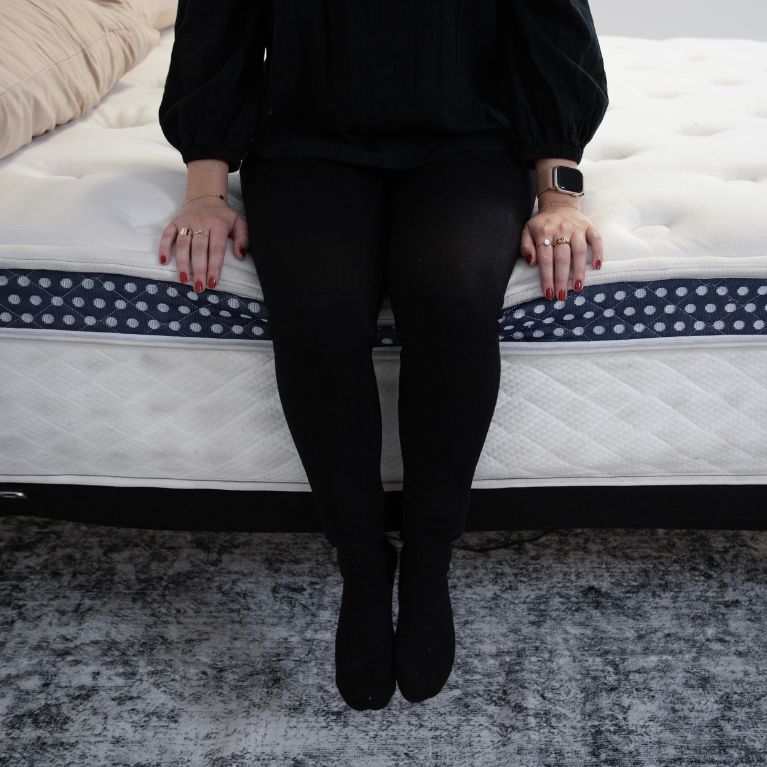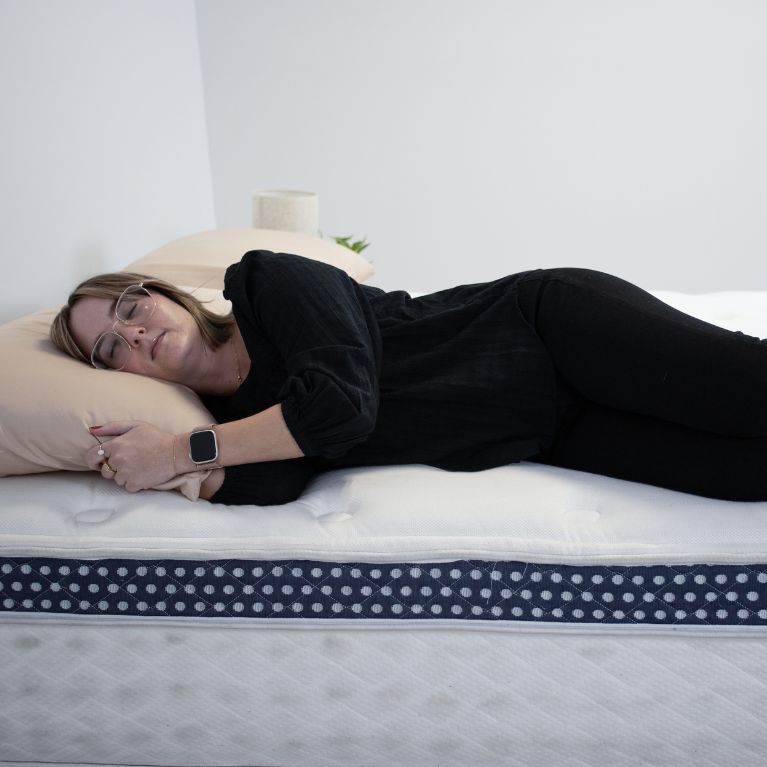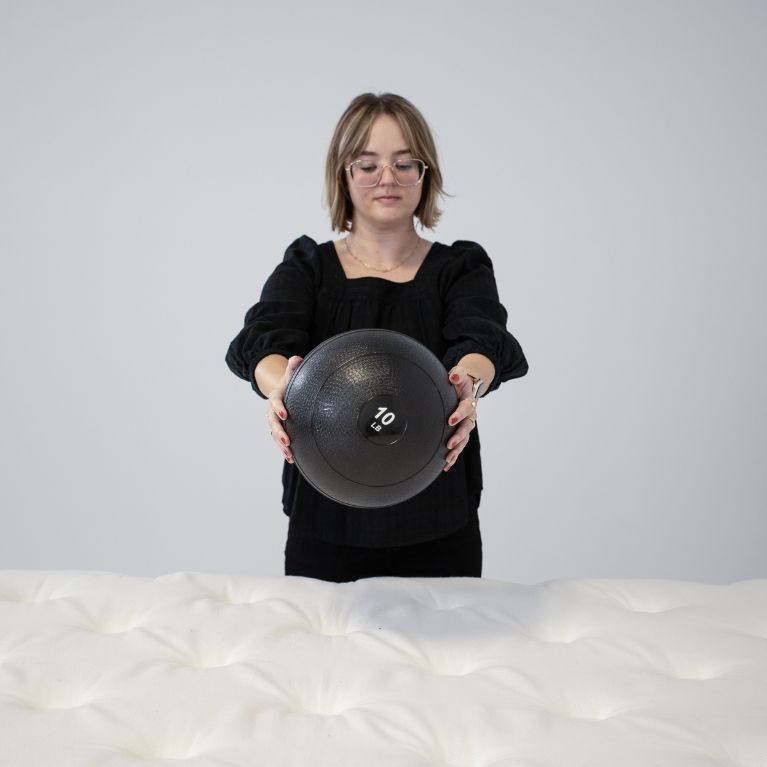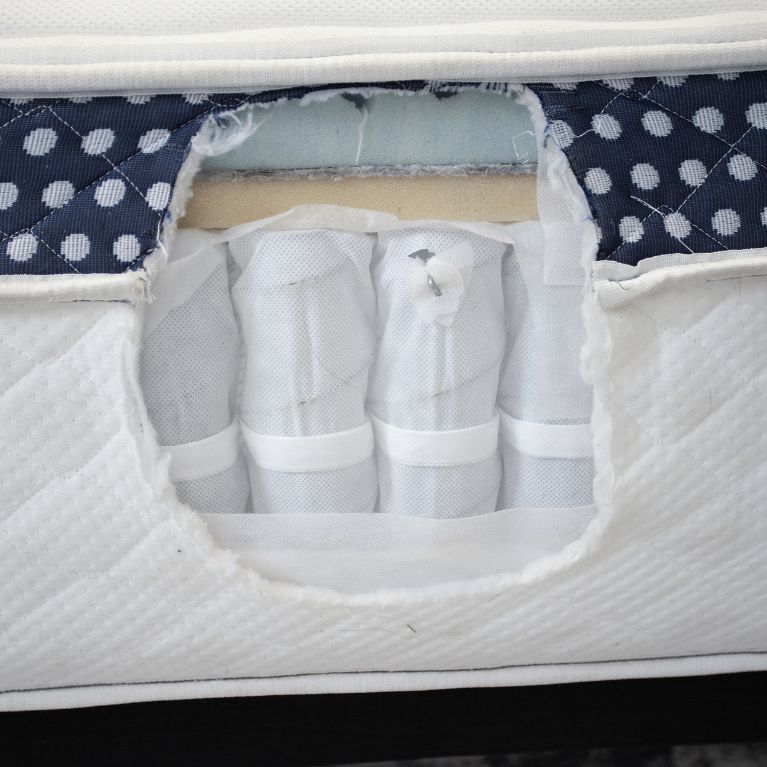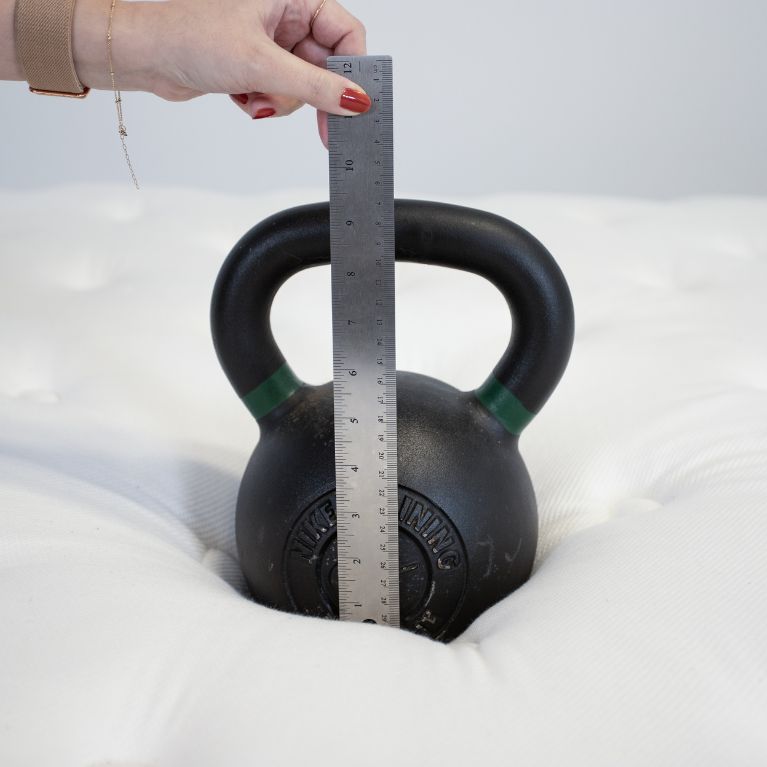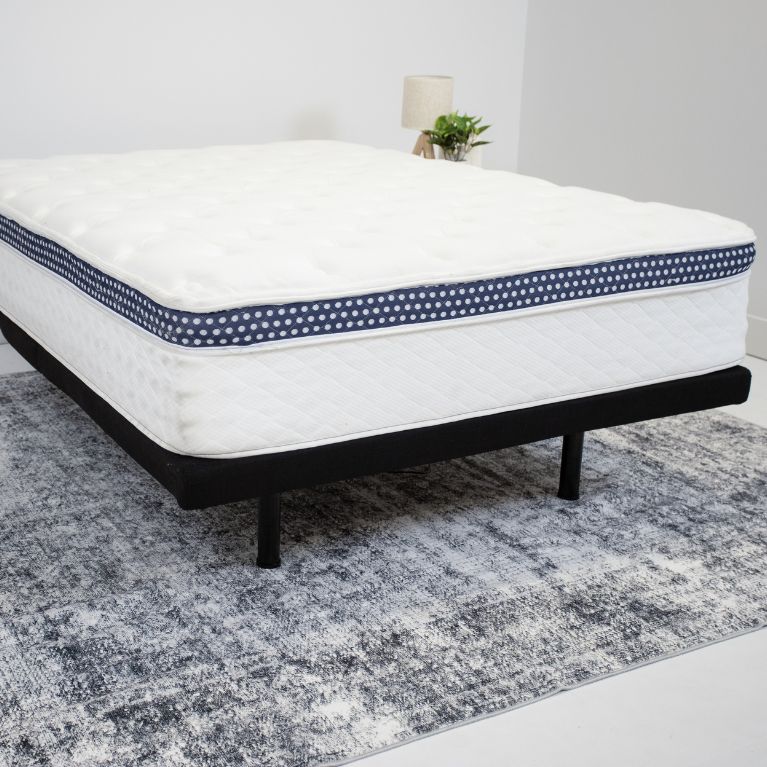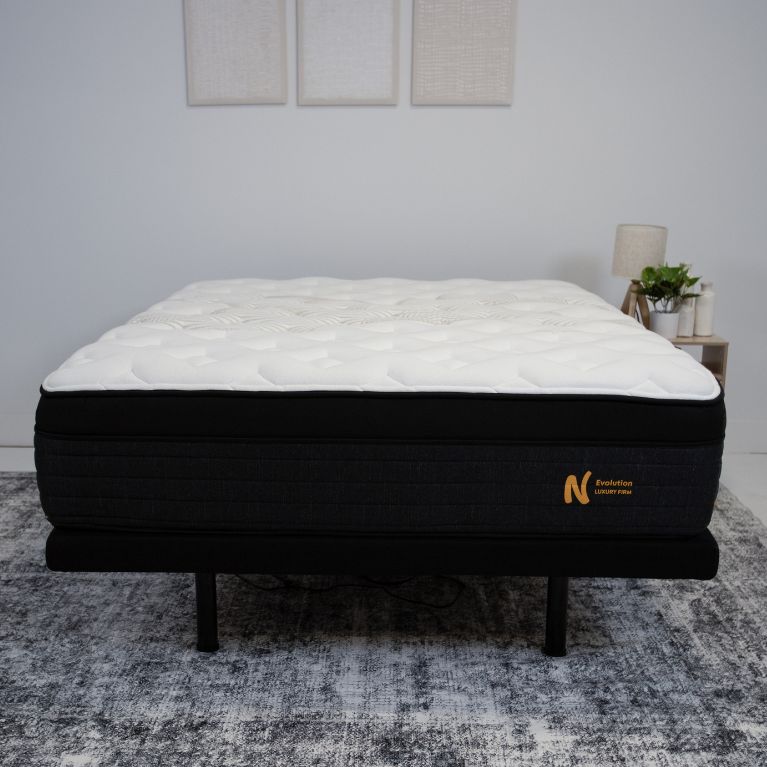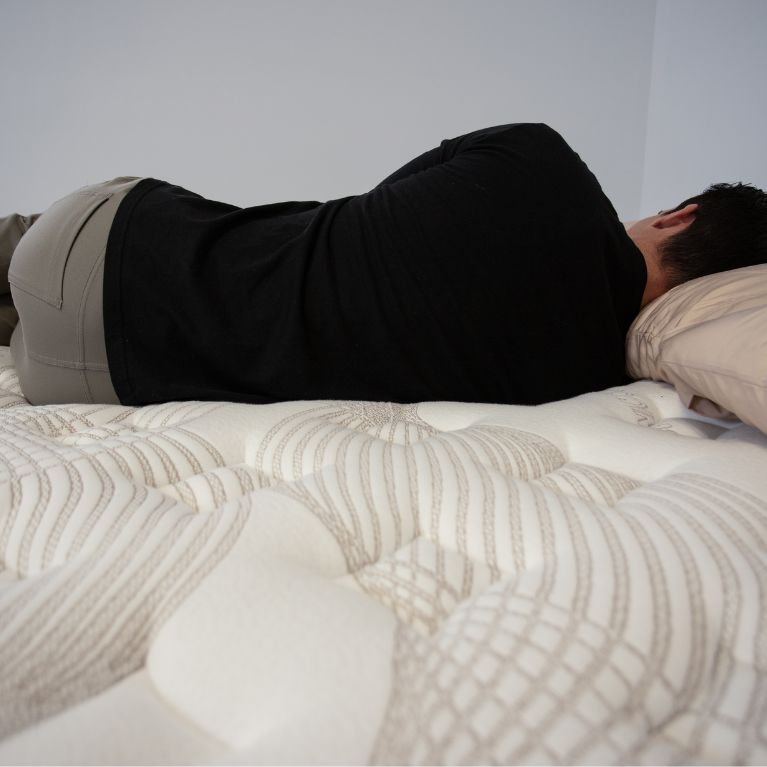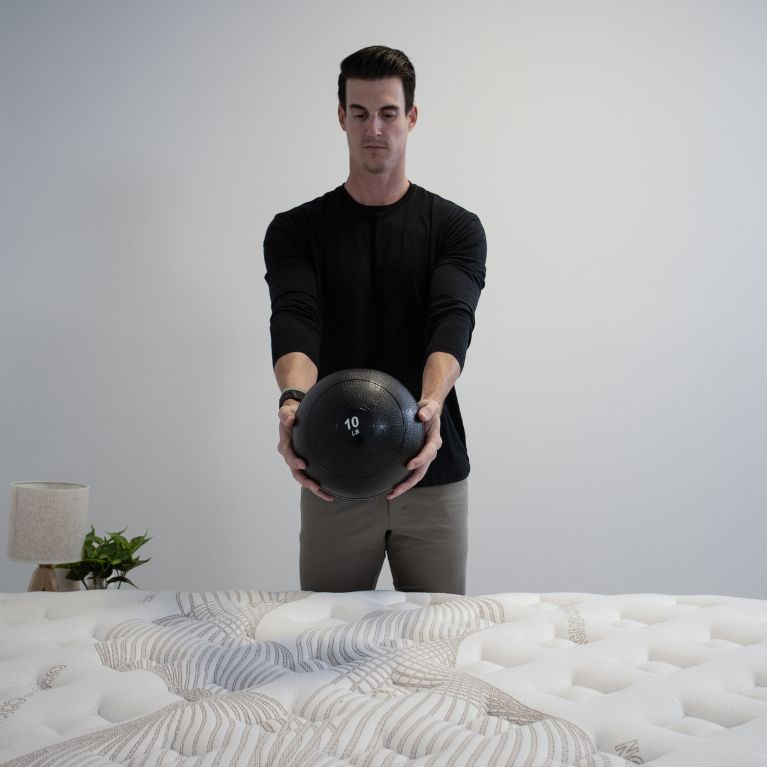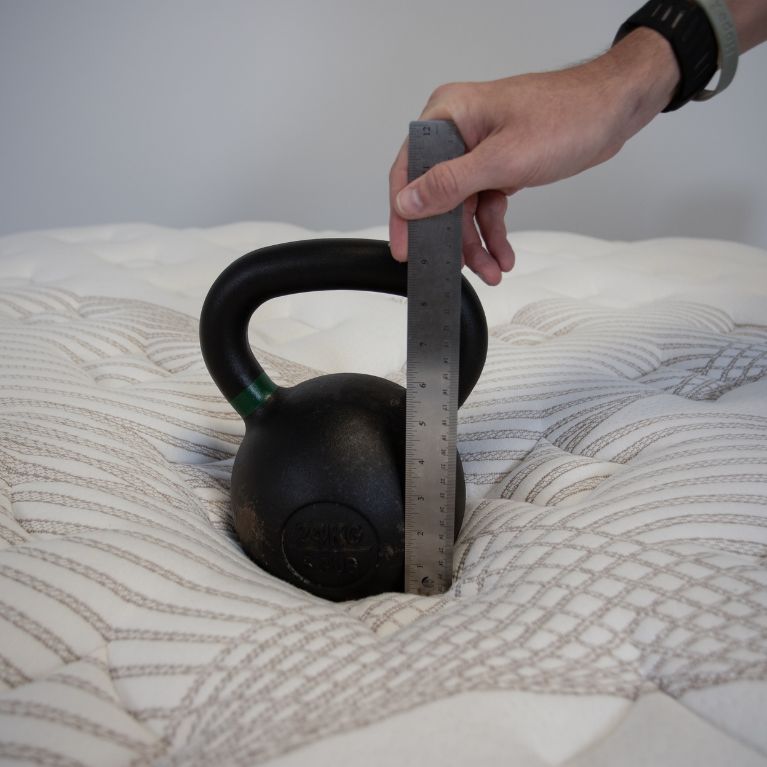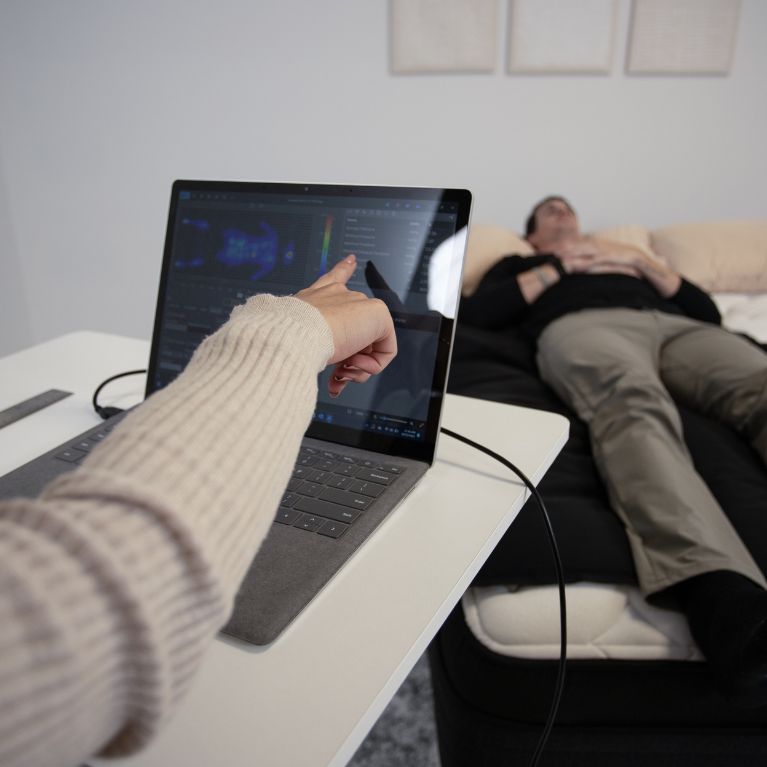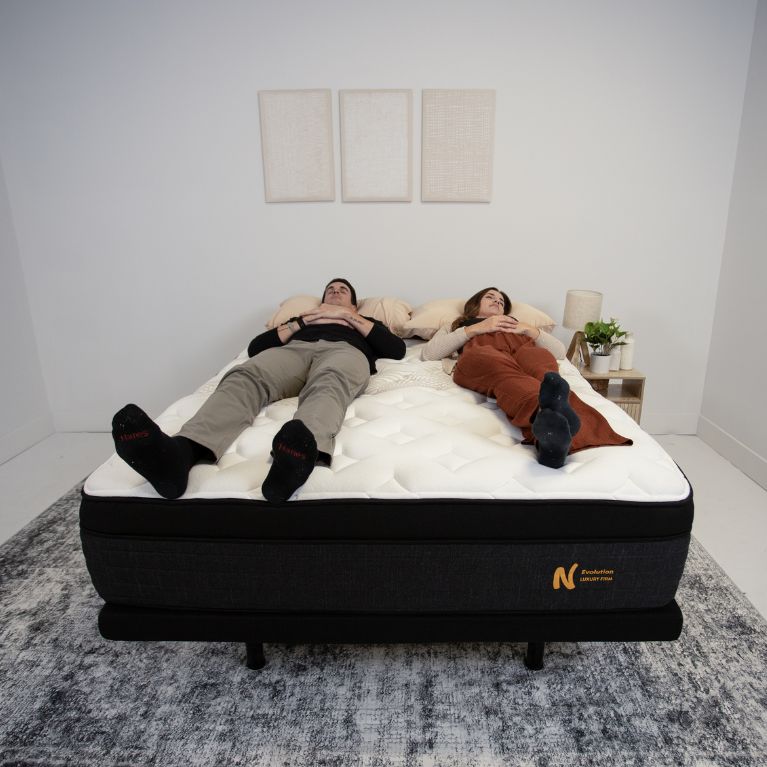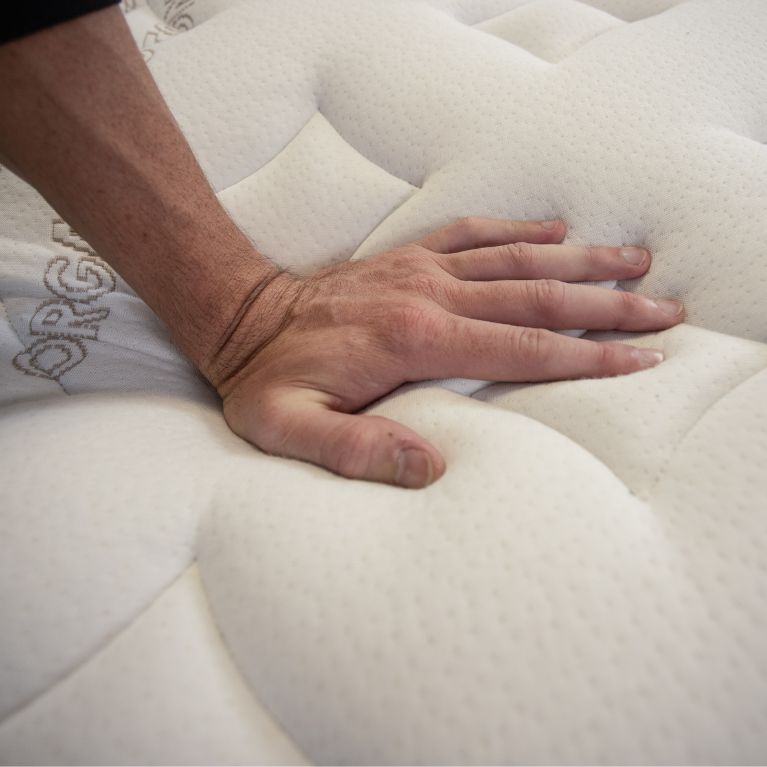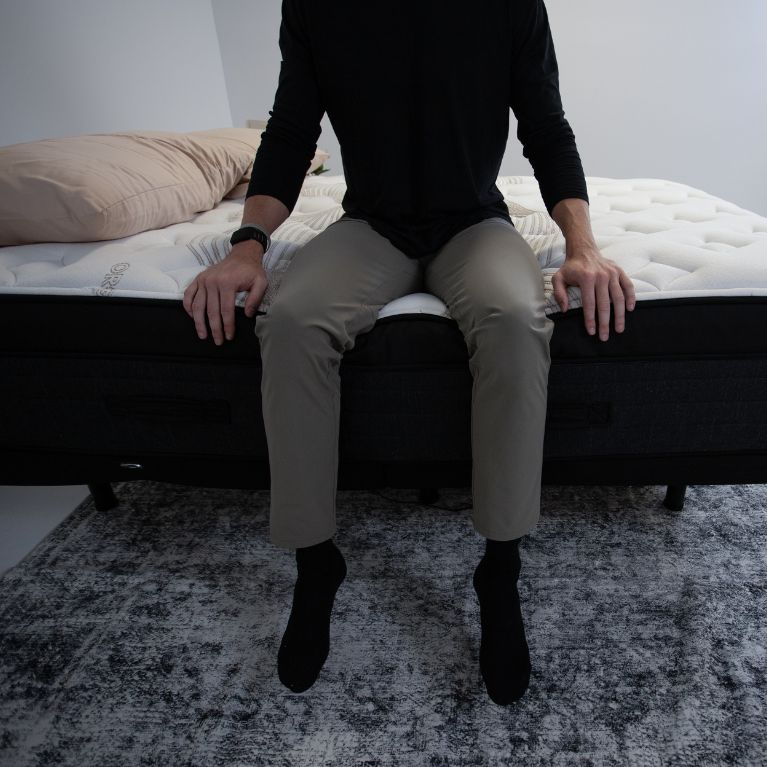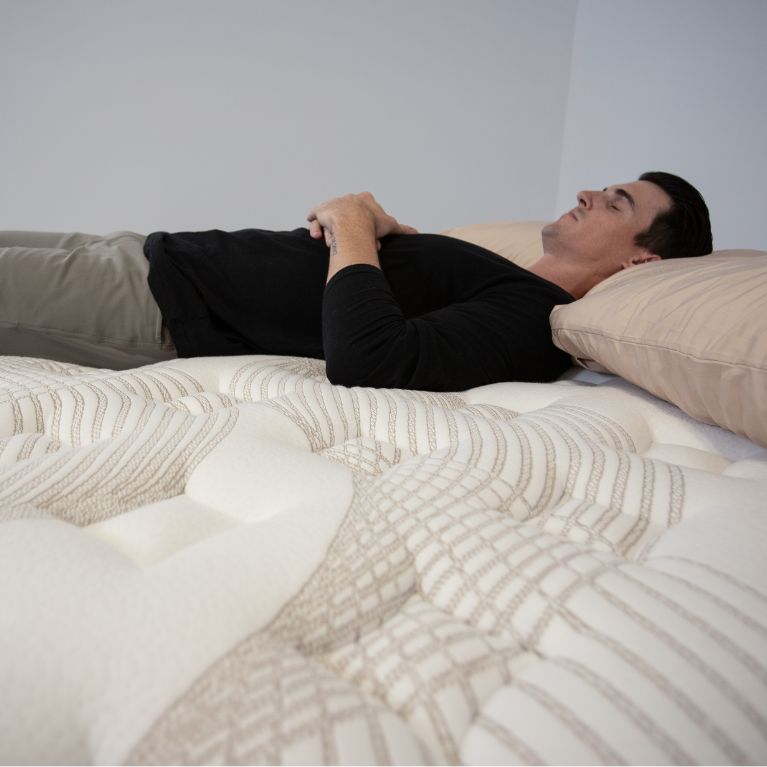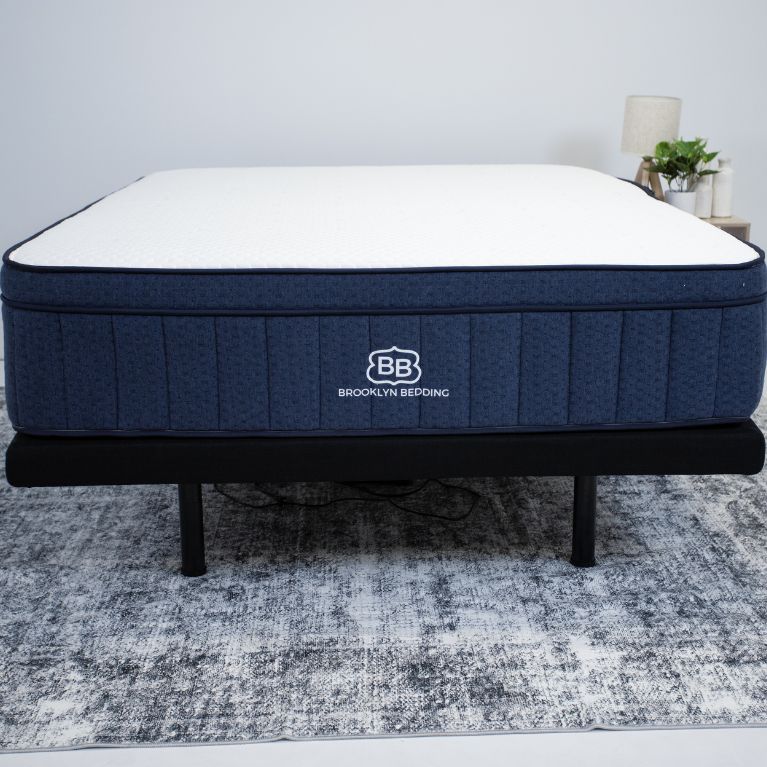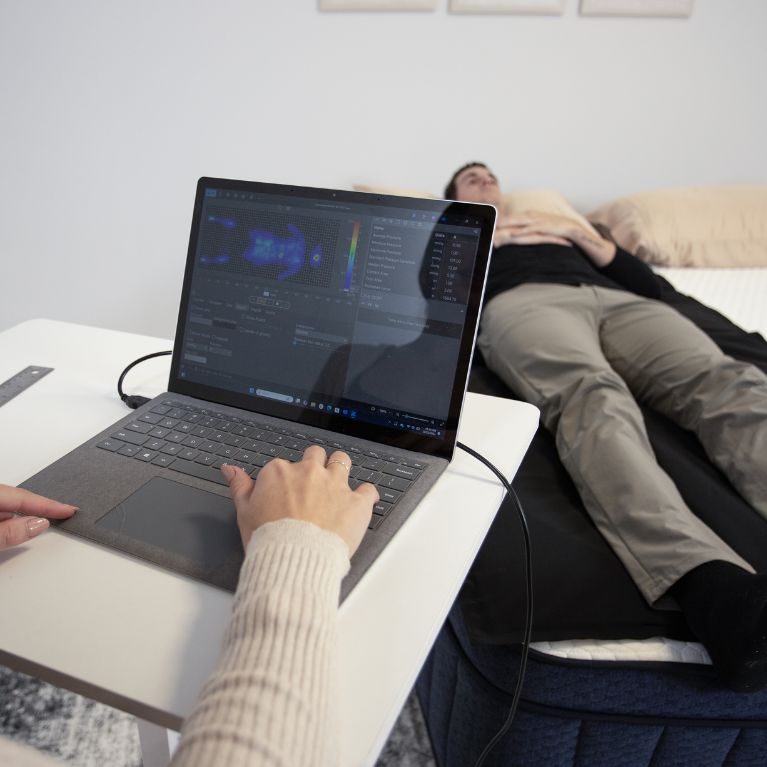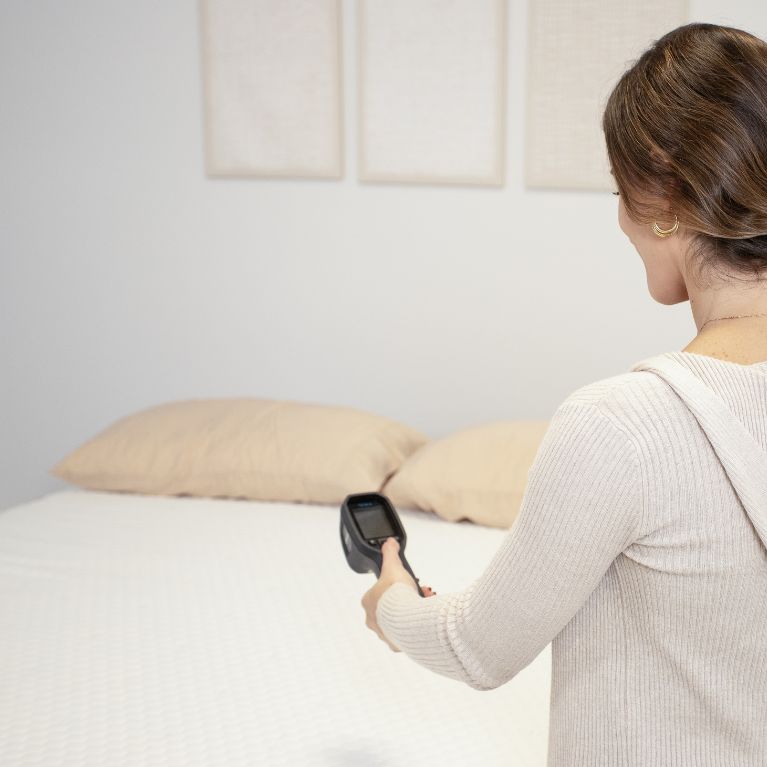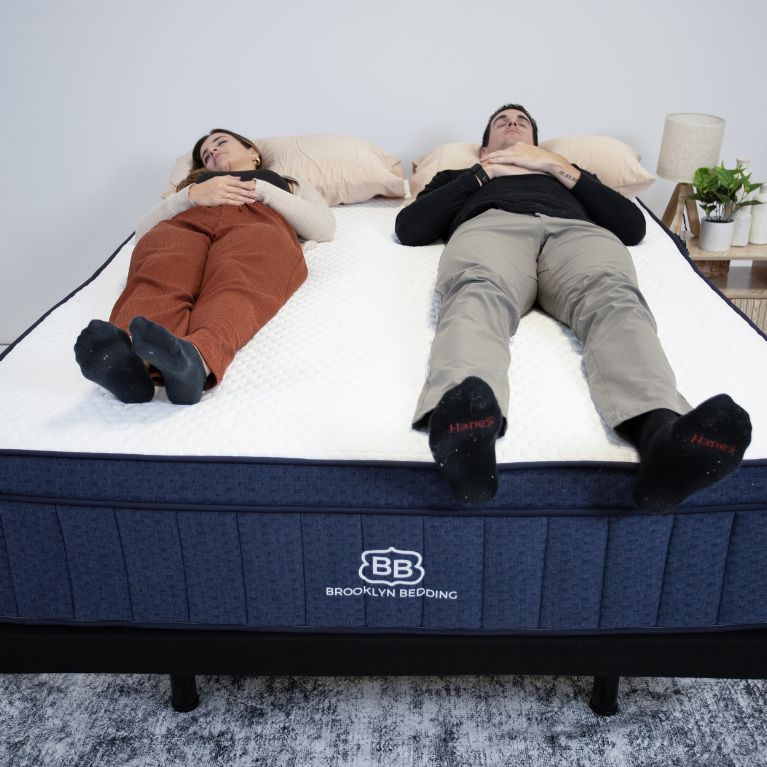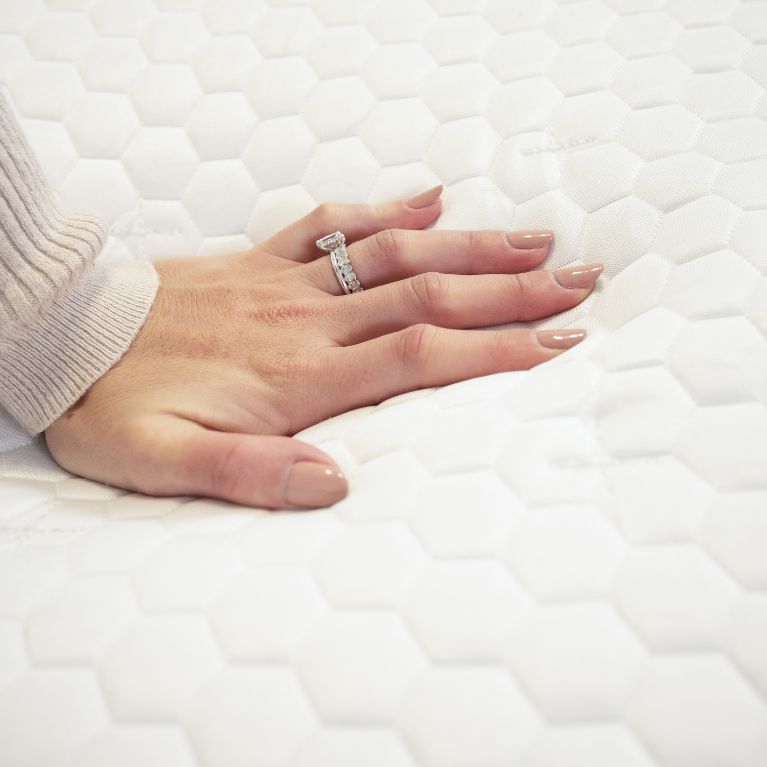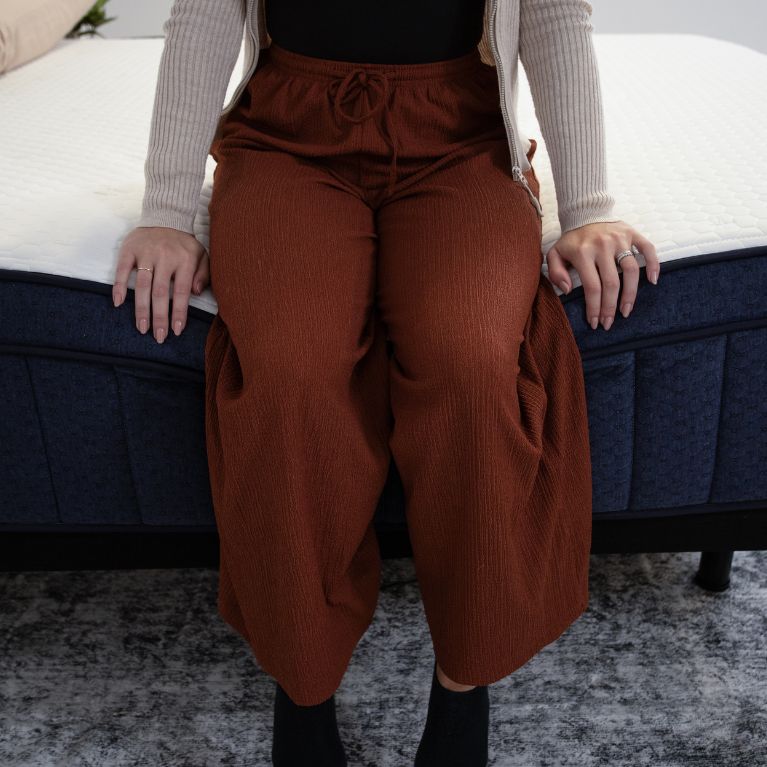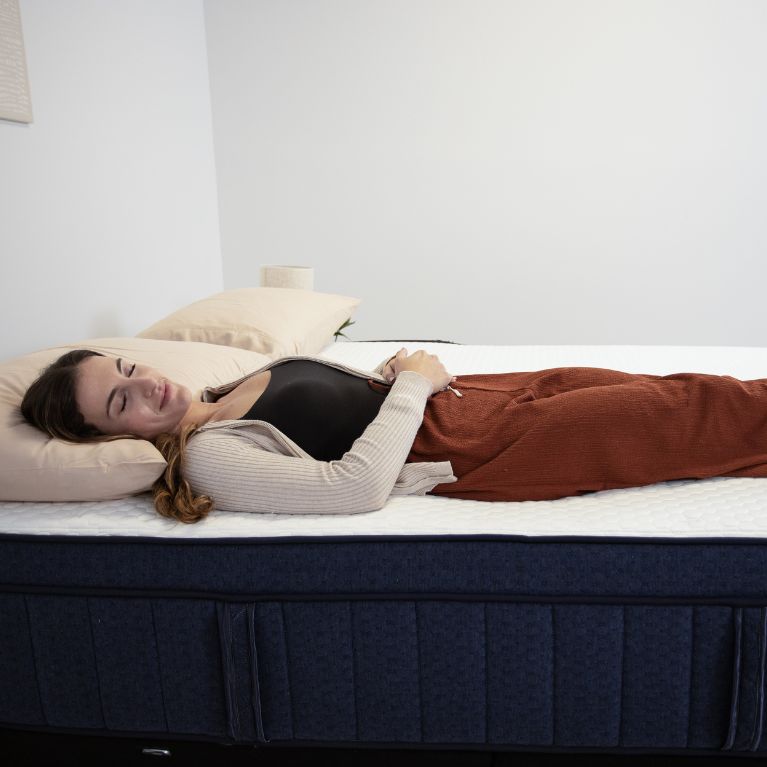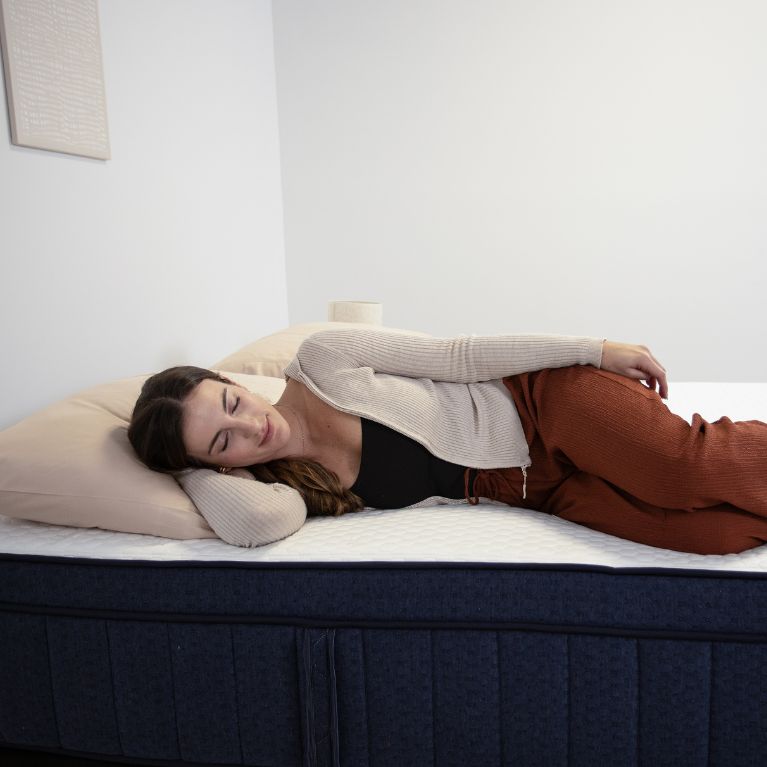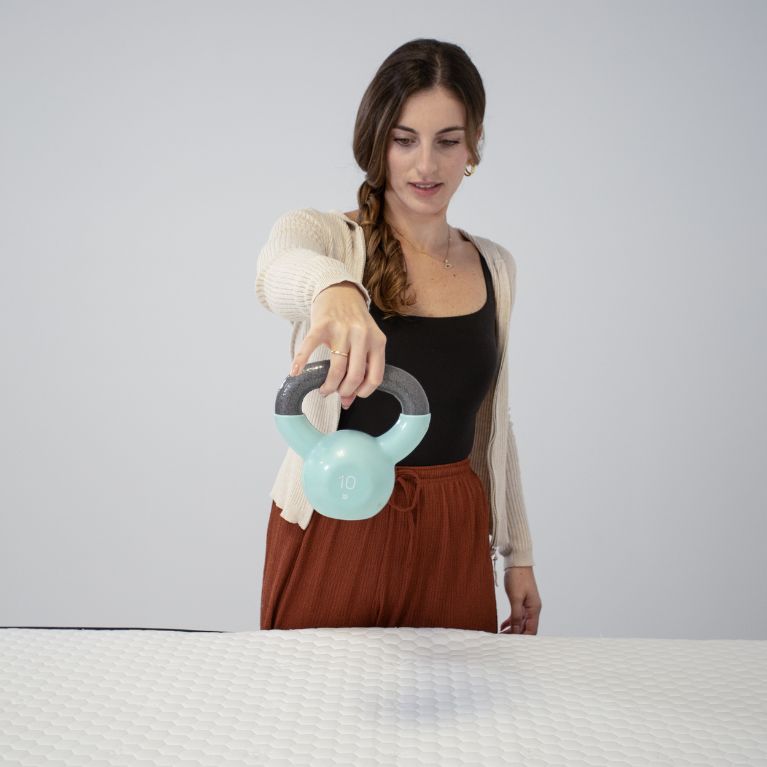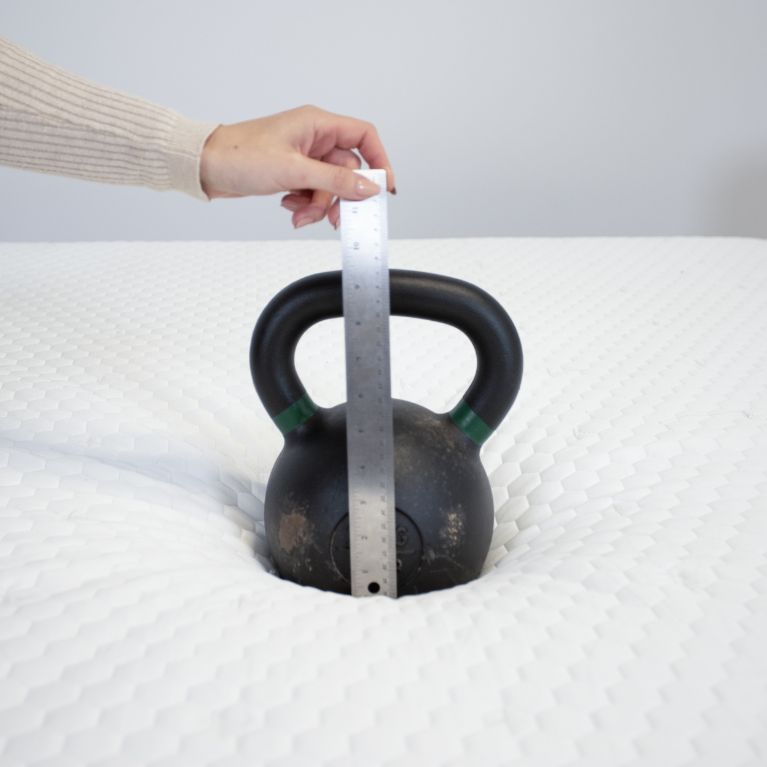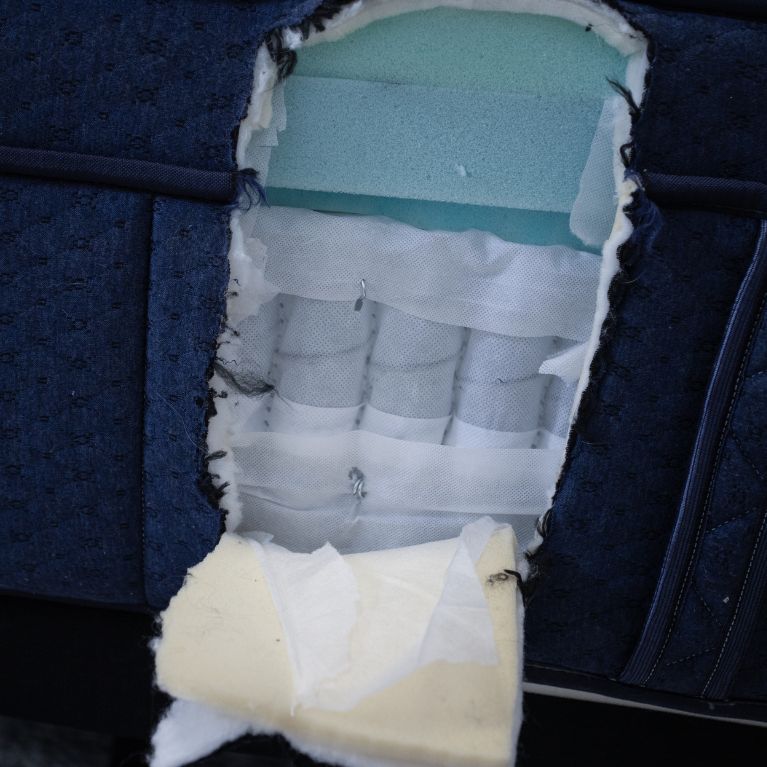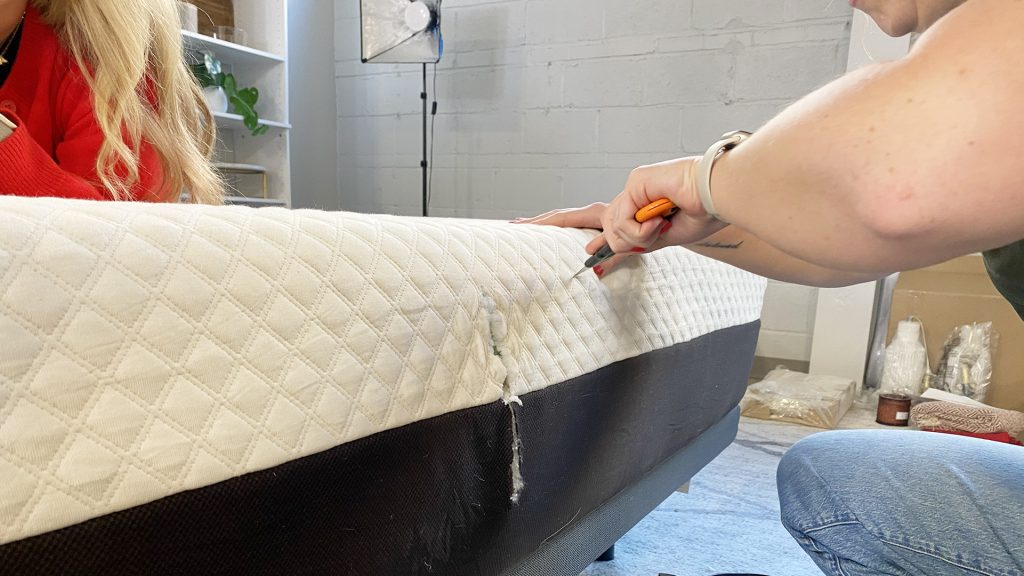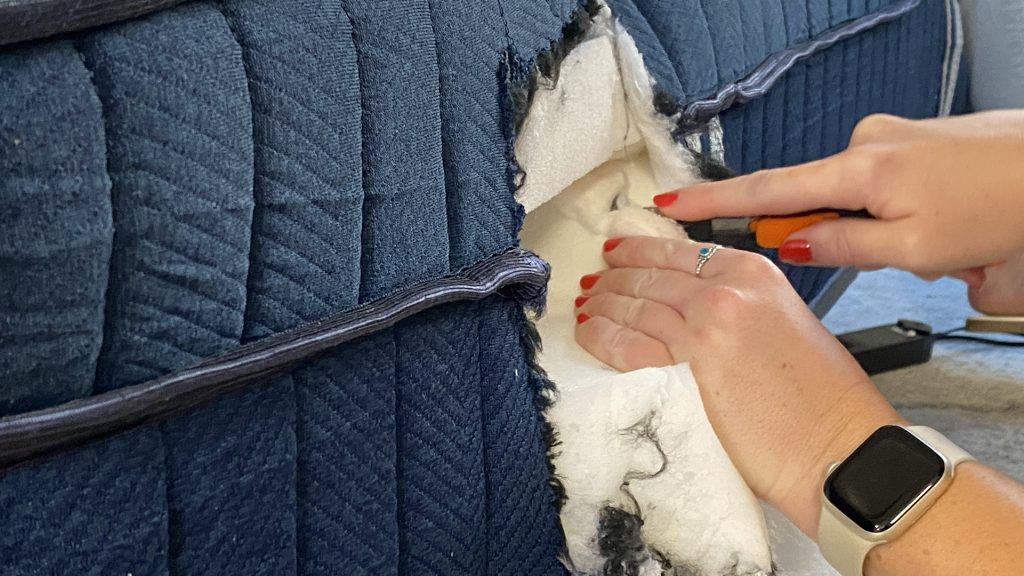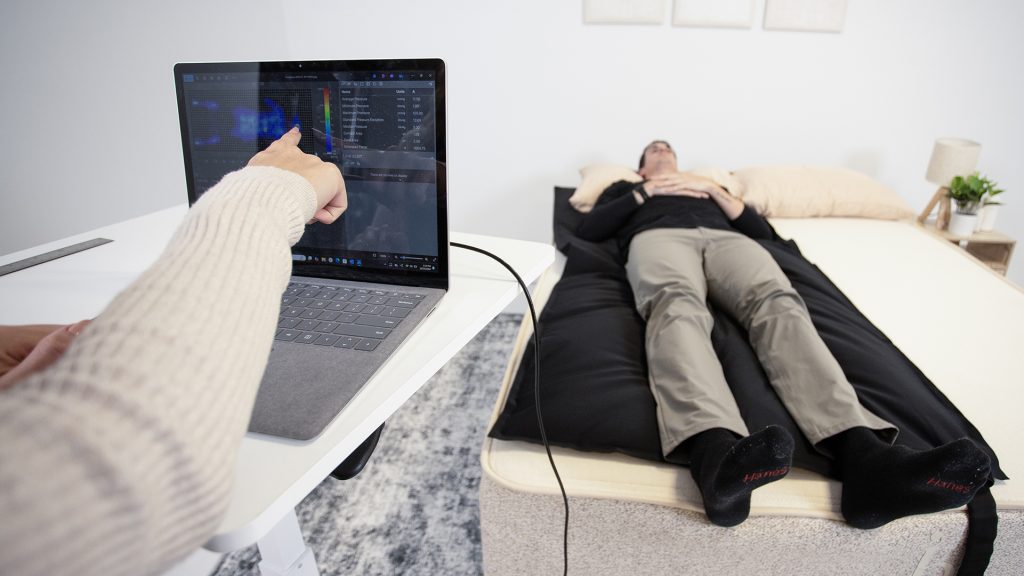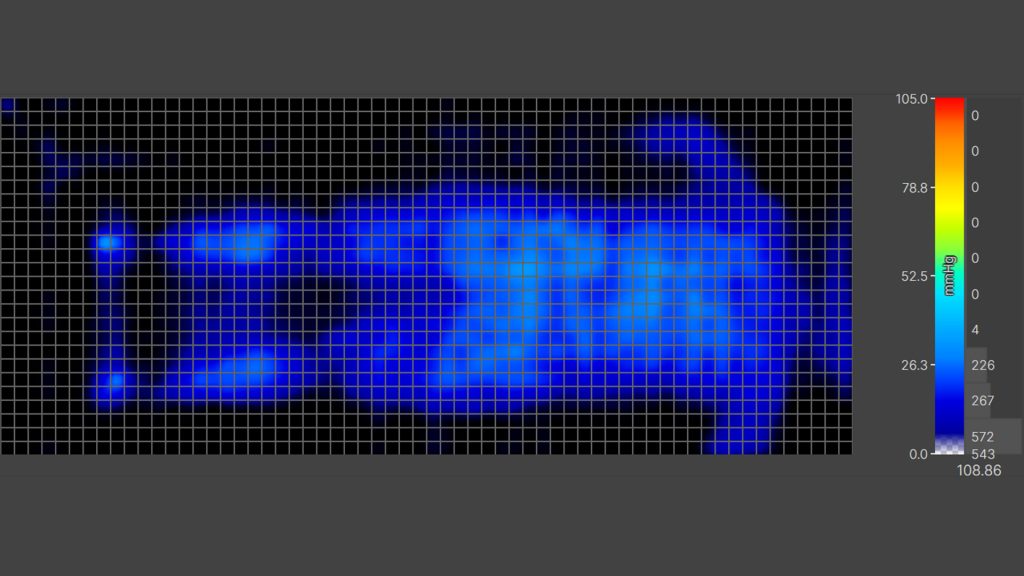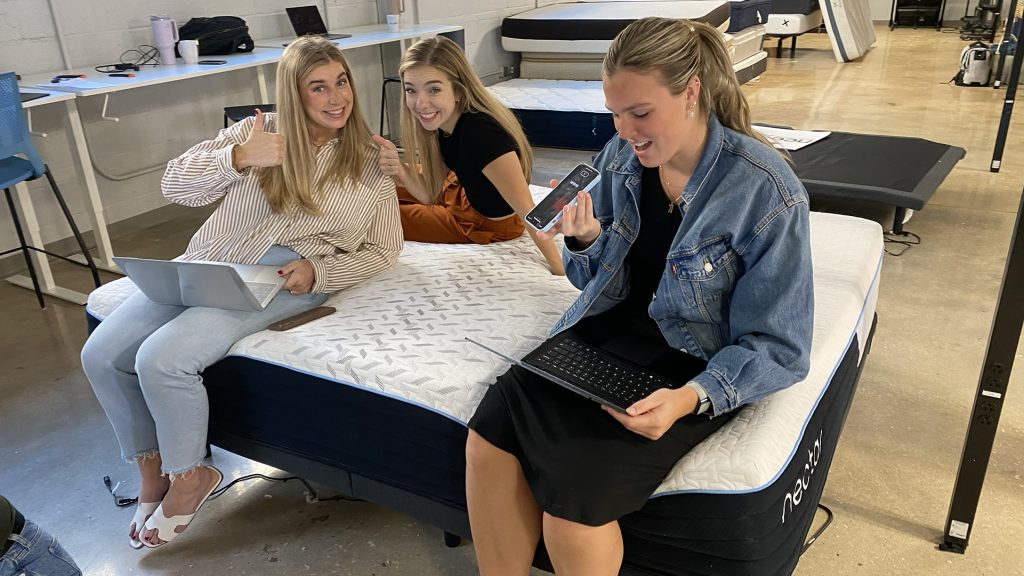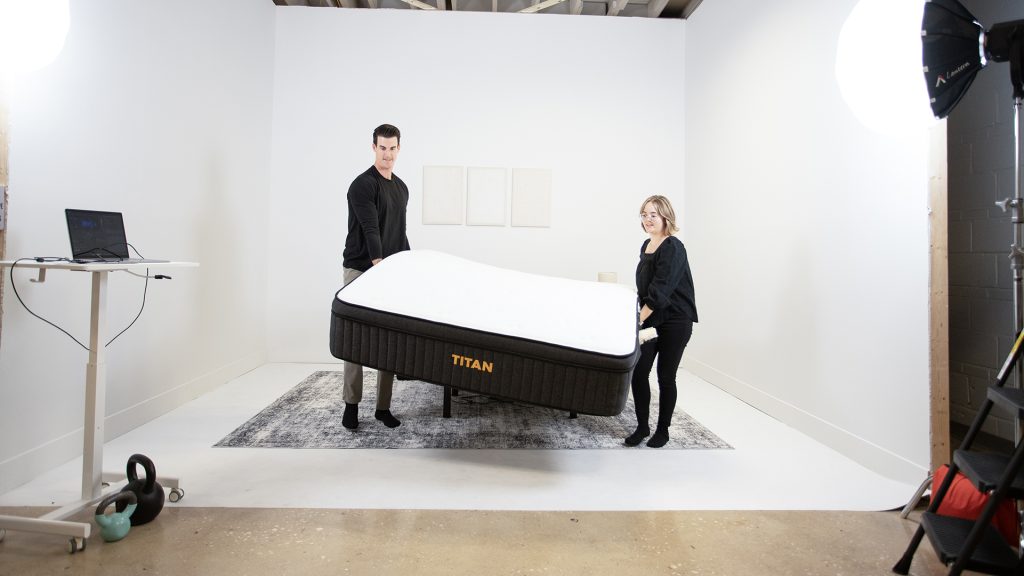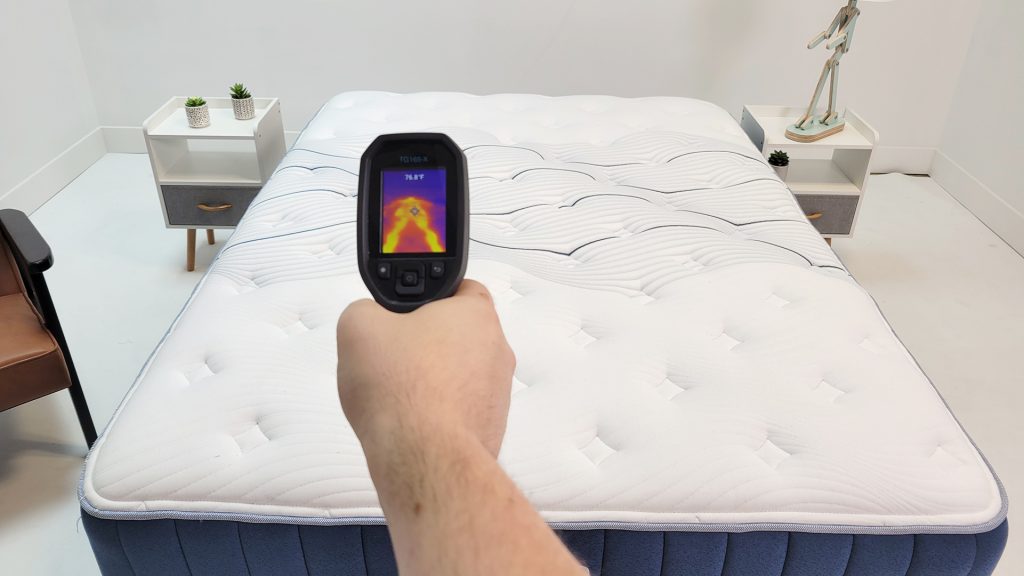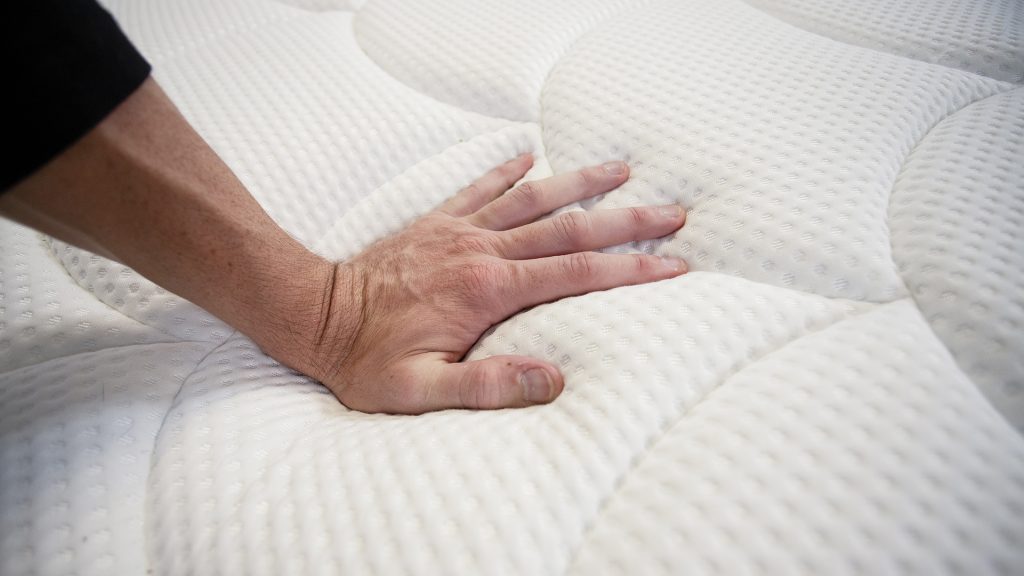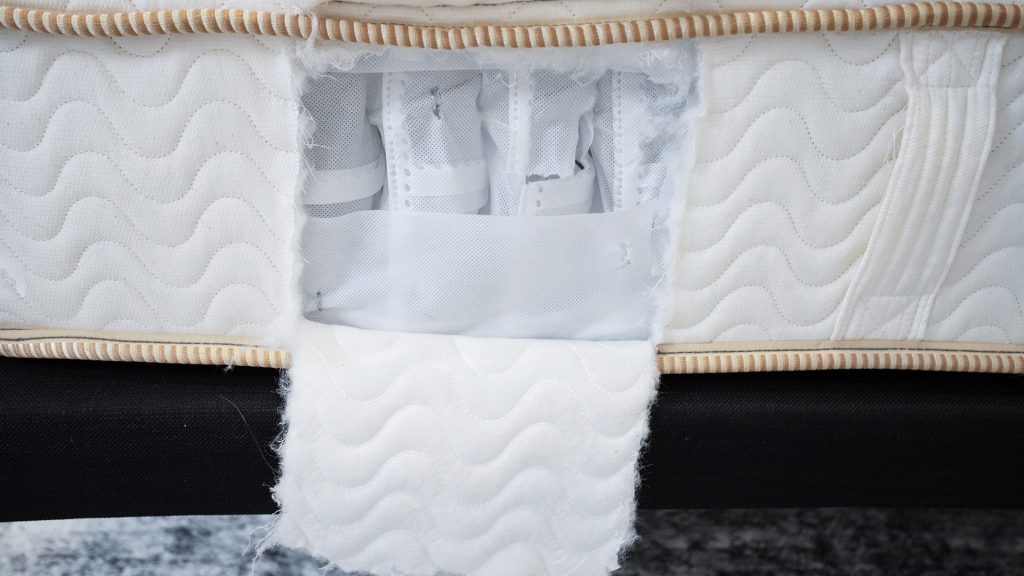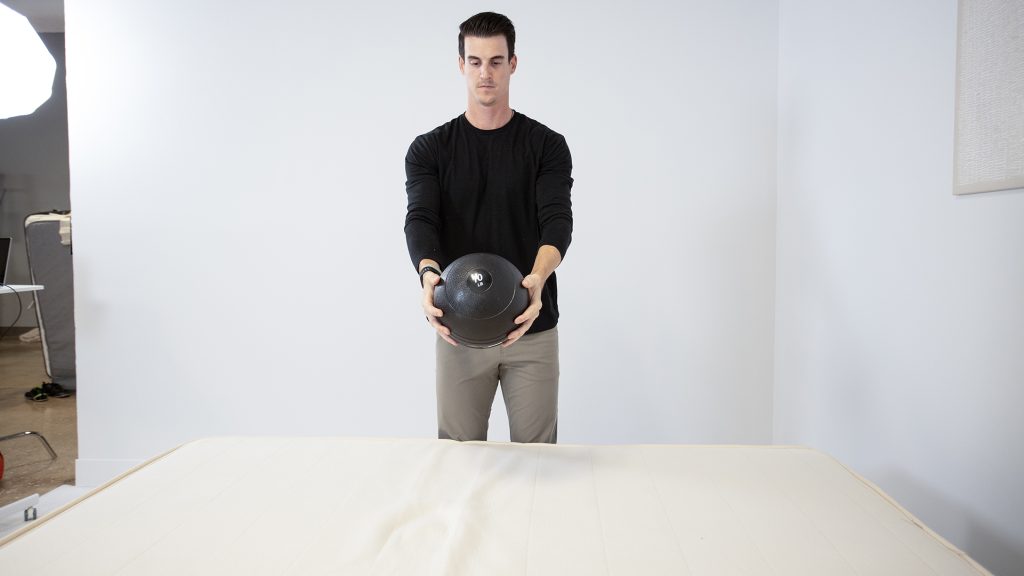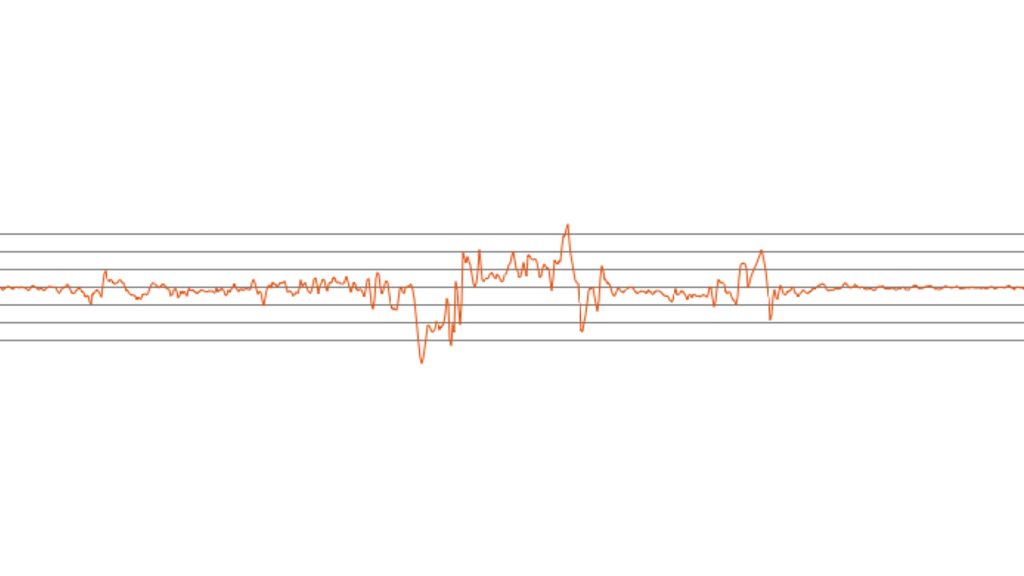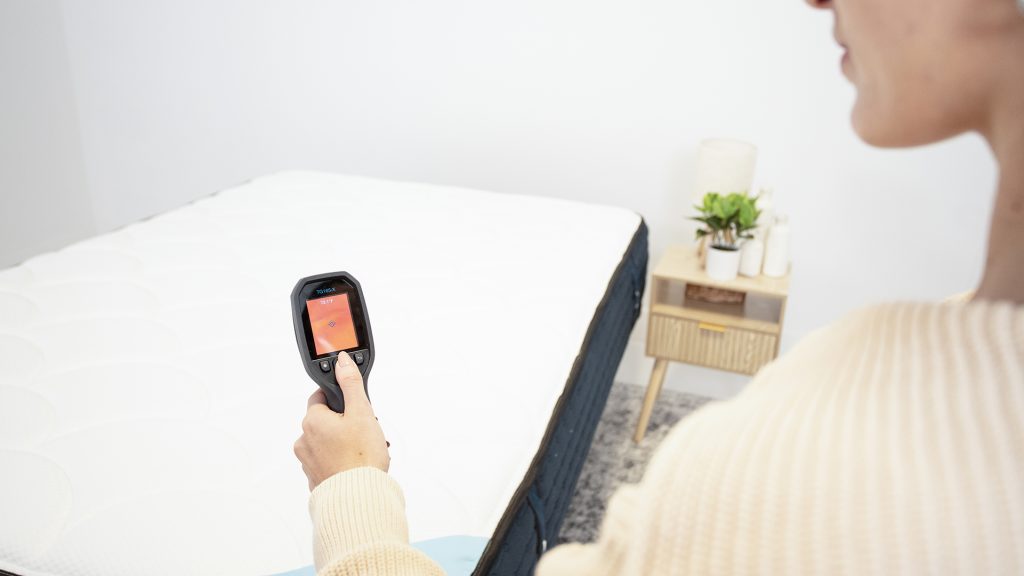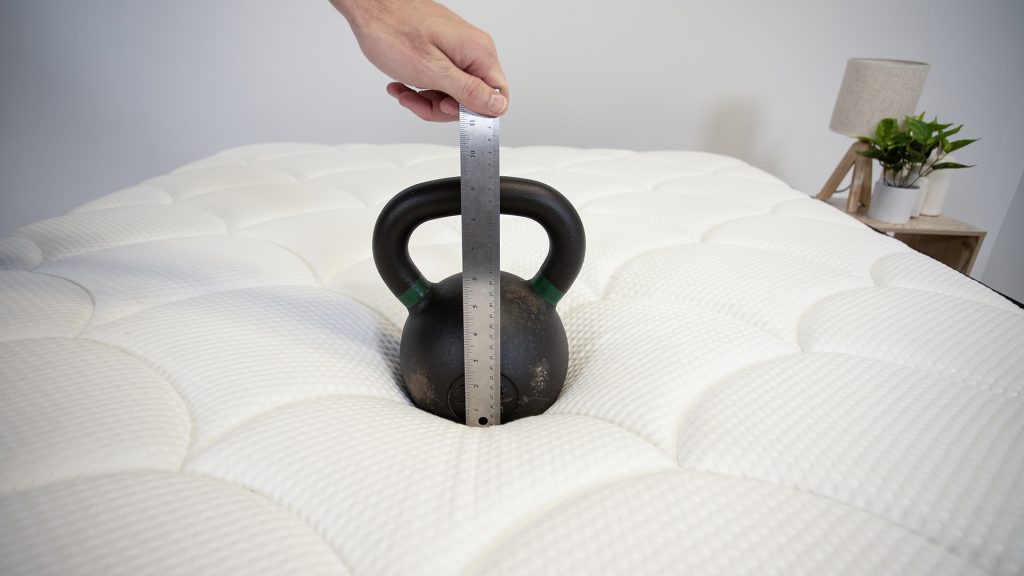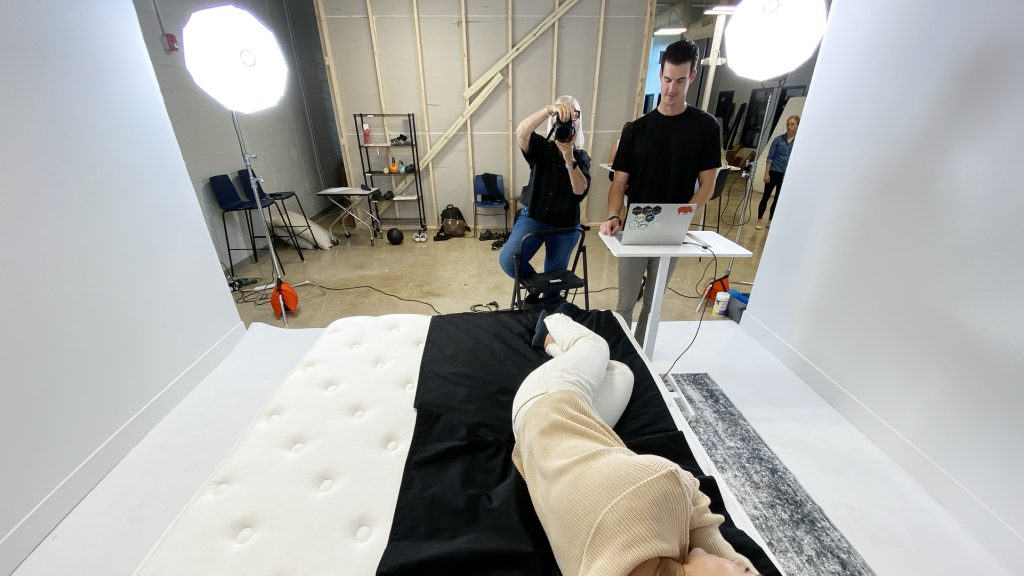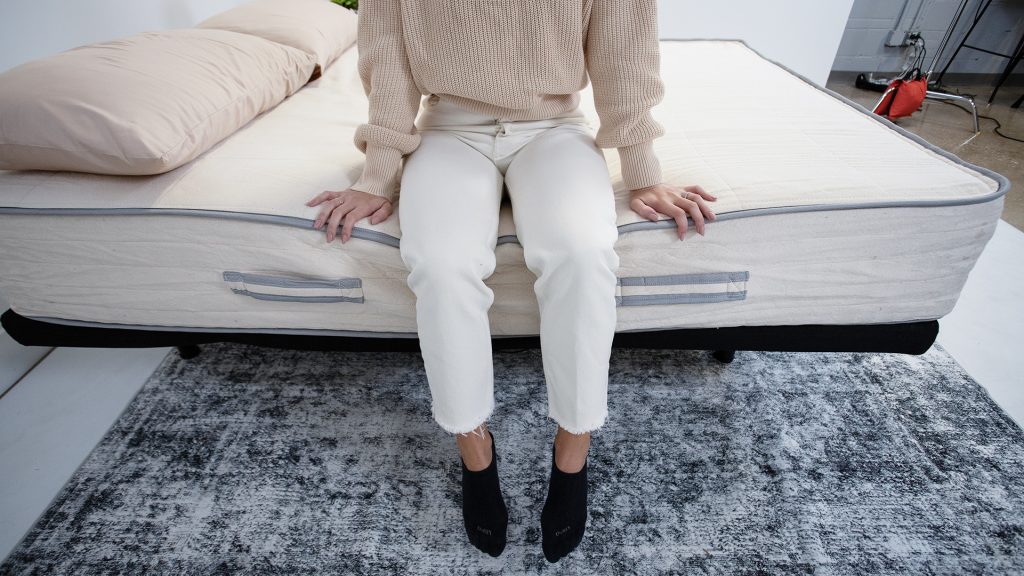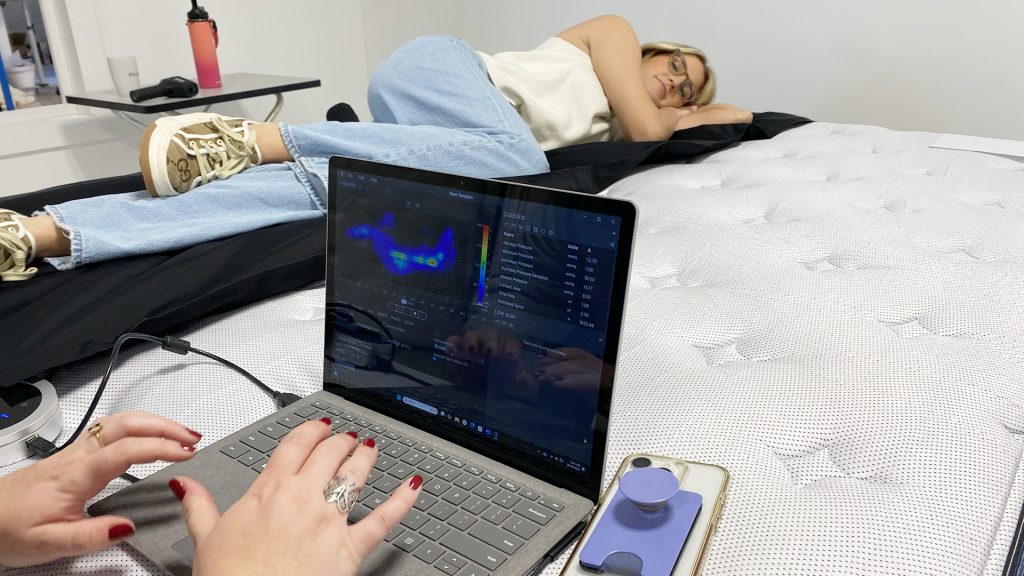Back pain and poor sleep can drive a vicious cycle. Back pain reduces sleep quality, while poor sleep over the long term increases your risk of experiencing back pain. (1) Finding a mattress that provides the right balance of support, comfort, and pressure relief can help you break free from this loop, allowing you to wake up feeling rested and pain-free.
“Back pain can be caused by various reasons, [and] a poor mattress may cause or contribute to it,” says Dr. Kevin Lees, D.C., Director of Chiropractic Operations from The Joint Chiropractic. He continues, “It’s important to speak with your doctor to understand the underlying cause of your back pain. Sleeping allows your body to heal and reset. If your mattress isn’t supporting your back well, it may create new pains or aggravate existing problems.”
Now, there isn’t one mattress that can solve all pain problems. Each body is different, and we all have our own preferences and needs that can impact which sleep surface provides optimal comfort and support. We considered these differences throughout our testing to help curate our list of the best mattresses for back pain, including various mattress materials, firmness levels, and price ranges. Explore our top picks below to find the best option for you.
Editor’s pick for best mattress for back pain
The Helix Midnight Luxe is our favorite mattress for back pain.
- It balances cushion and support to create the ideal sleep environment for side and back sleepers dealing with back and neck pain.
- The cradling foam layers help relieve pressure through sensitive joints while the zoned coils help keep the body lifted and maintain ideal spinal alignment.
- Advanced cooling features help sleepers maintain a comfortable body temperature and avoid overheating at night.
Our picks for the best mattresses for back pain
- Best for back and neck pain: Helix Midnight Luxe
- Best for on a budget: Nectar Classic Memory Foam
- Best for lumbar support: Saatva RX
- Best for lower back pain: DreamCloud Hybrid
- Best for back and hip pain: Bear Mattress Elite Hybrid
- Best firm: WinkBeds The WinkBed Firm
- Best for side sleepers: Nolah Evolution
- Best cooling: Brooklyn Bedding Aurora Luxe Cooling
How to choose a mattress for back pain
With the seemingly endless number of mattress options, finding the right one for you can feel impossible. We’ve outlined some key considerations that can help you find a mattress that will alleviate your pain and lead to a good night’s rest. Check out our article on how to choose a mattress to read more.
Firmness
Mattress firmness is one of the most vital elements of finding a bed that will help reduce back pain. Previously, doctors would suggest firm mattresses, but recent studies have demonstrated that a medium-firm mattress can better alleviate pain and lead to higher-quality sleep. (10) “Back sleepers should choose a medium-firm mattress, around 5.5 to 7 out of 10 on the firmness scale, to keep their spine aligned without causing pain. A hybrid mattress with both foam and coils can offer great support,” affirms Dr. Harris. While each manufacturer gives its mattresses a firmness rating, it’ll ultimately come down to how it feels based on your body type and sleep position.
Body type
Each person’s body’s unique shape and size can make a big difference regarding perceived mattress firmness. Heavier-weight individuals typically prefer a firmer mattress that helps distribute their weight and provides adequate support. On the other hand, lighter people often perceive a mattress as firmer, so they need a softer option that won’t feel too hard on sensitive joints. (11)
Check out our best mattresses for heavy people if you’re looking for mattresses with adequate support.
Pressure relief
Finding a mattress relieving pressure can help remove stress from critical joints like your shoulders, hips, back, and neck. As the mattress hugs your body this way, it can also promote proper spinal alignment, which is crucial for reducing the strain on your back. Pressure relief is also paramount in how comfortable your mattress feels and how well you sleep.
Check out the best mattresses for fibromyalgia to see other options for reducing pain and discomfort.
Support
It’s one thing to find a mattress that offers cloud-like comfort, but it also needs to provide adequate support. Regarding back pain, you want to look at how each mattress incorporates lumbar support. This targeted support can help promote proper sleep posture as it maintains spinal alignment and relieves tension in the lower back.
If you are interested specifically in lumbar support, this is also an important feature of the best orthopedic mattresses.
Cost
You should always factor in cost when shopping for any product, especially for bigger ticket items like mattresses. Determine your budget before you start your search, remembering that a quality mattress is a long-term investment. You may feel uneasy as you prepare to make this big purchase, but remember that the upfront cost will be more than worth it if it leads to years of pain relief and quality sleep. We also recommend planning your mattress shopping in advance to take advantage of deep discounts. The best time to buy a mattress is around major U.S. holidays, like President’s Day, Memorial Day, and Labor Day.
Sleep trial
It can be hard to know whether a mattress is comfortable until you’ve had time to sleep on it nightly. Choosing a brand that offers a decent sleep trial can give you ample time to try it out and decide if it’s a good fit. All of the mattresses on our list have at least a 100-day trial, with others generously offering up to a year.
Compare mattresses for back pain
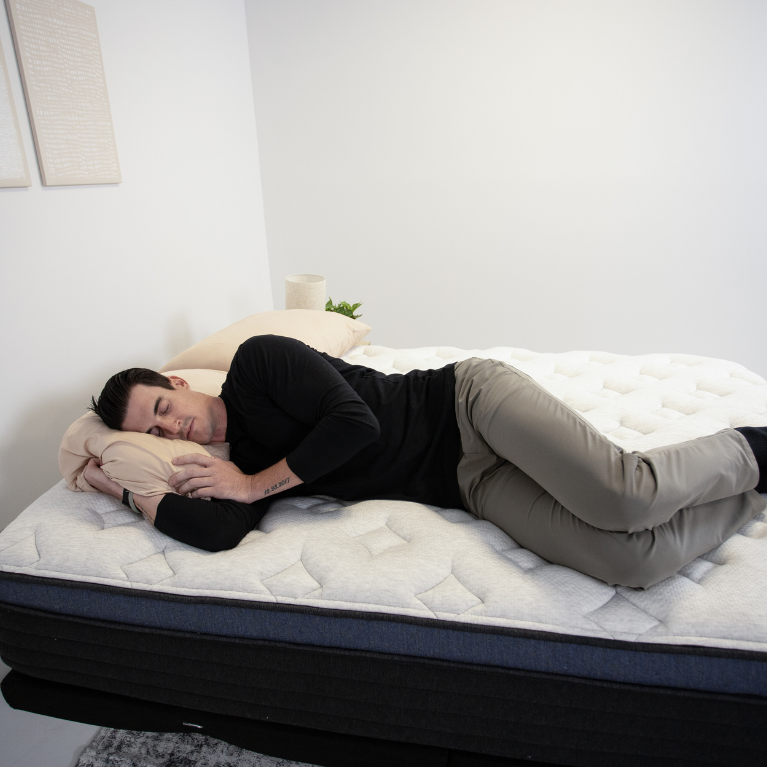
|
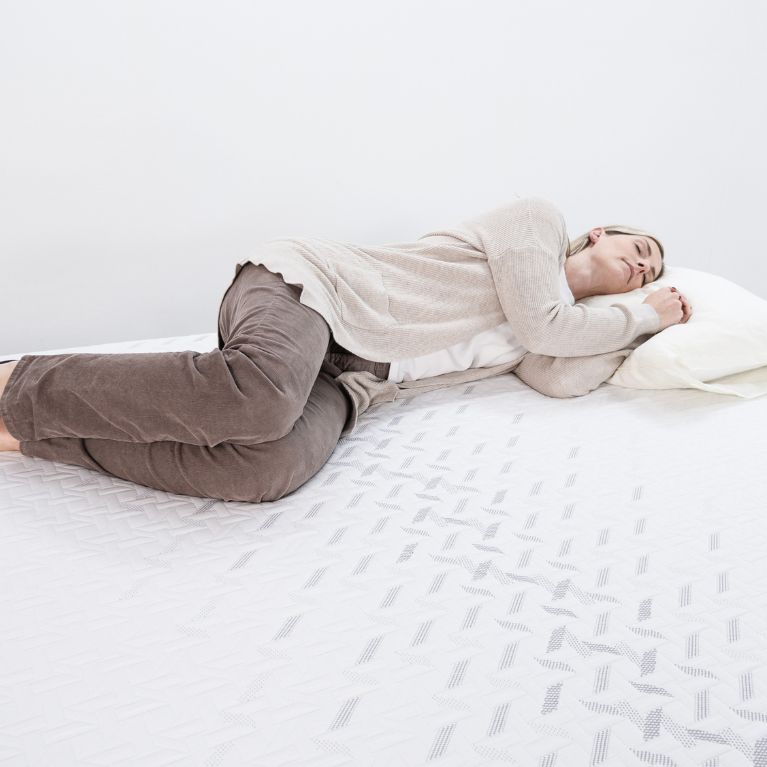
|
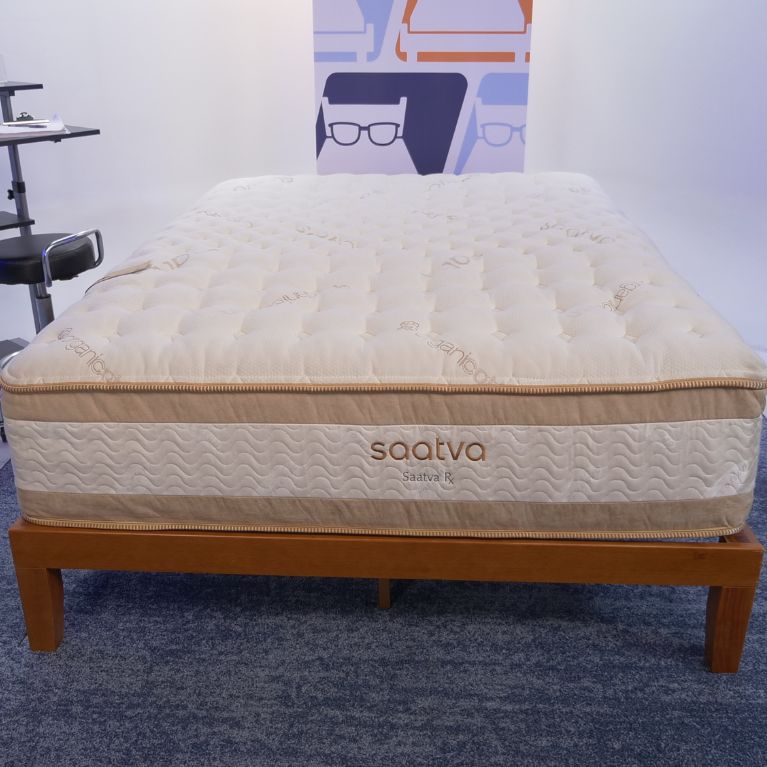
|
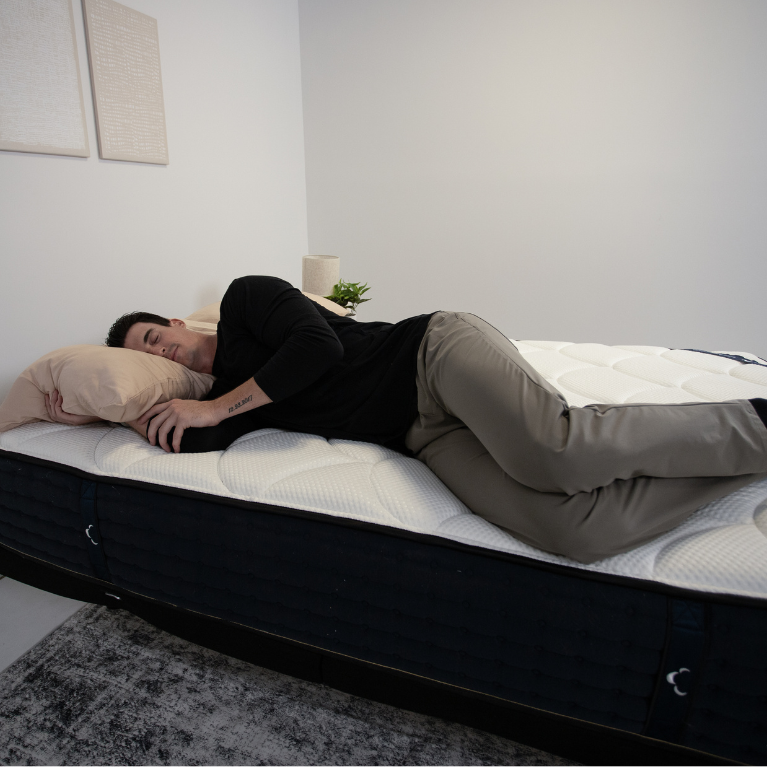
|
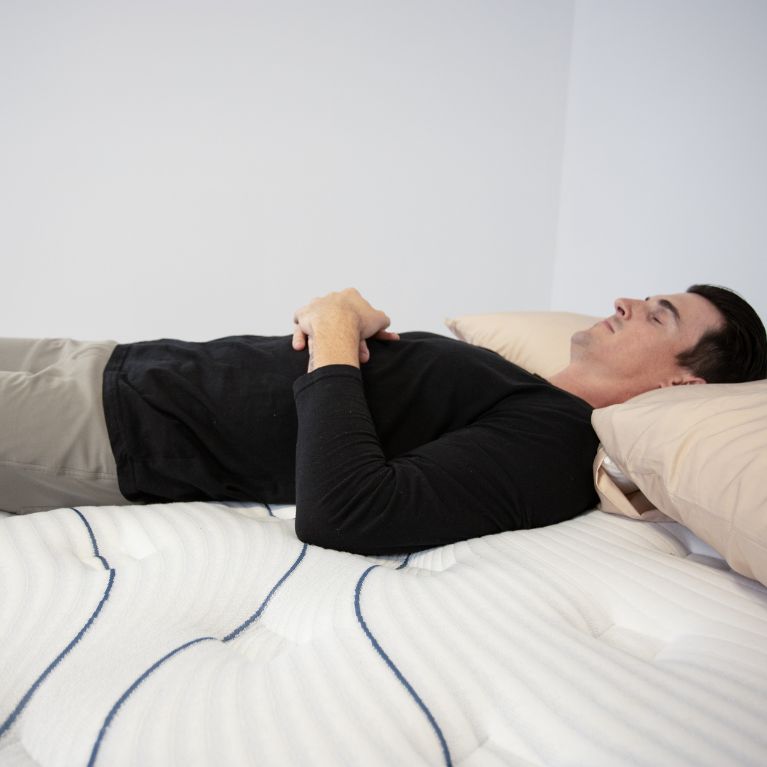
|
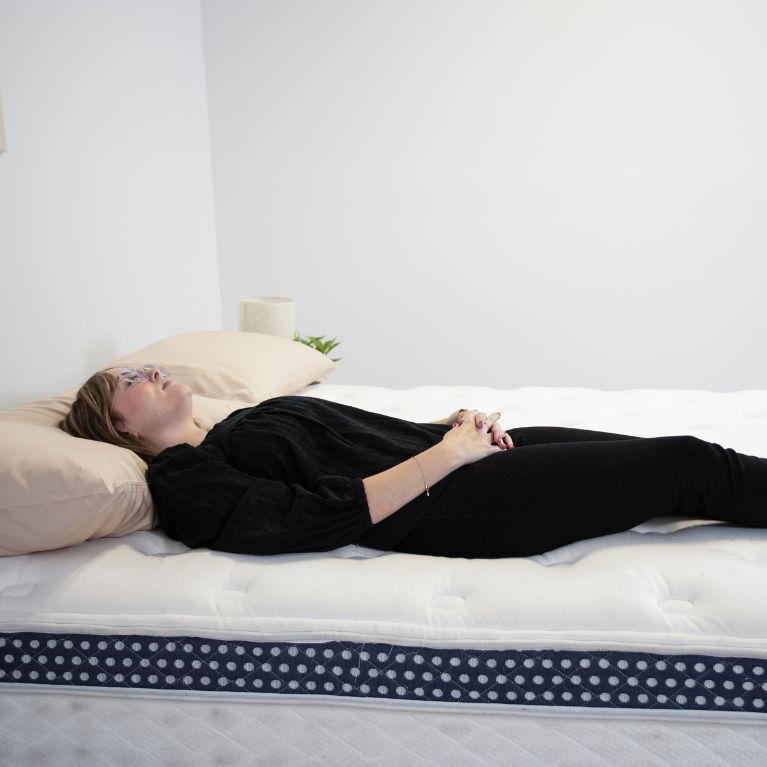
|
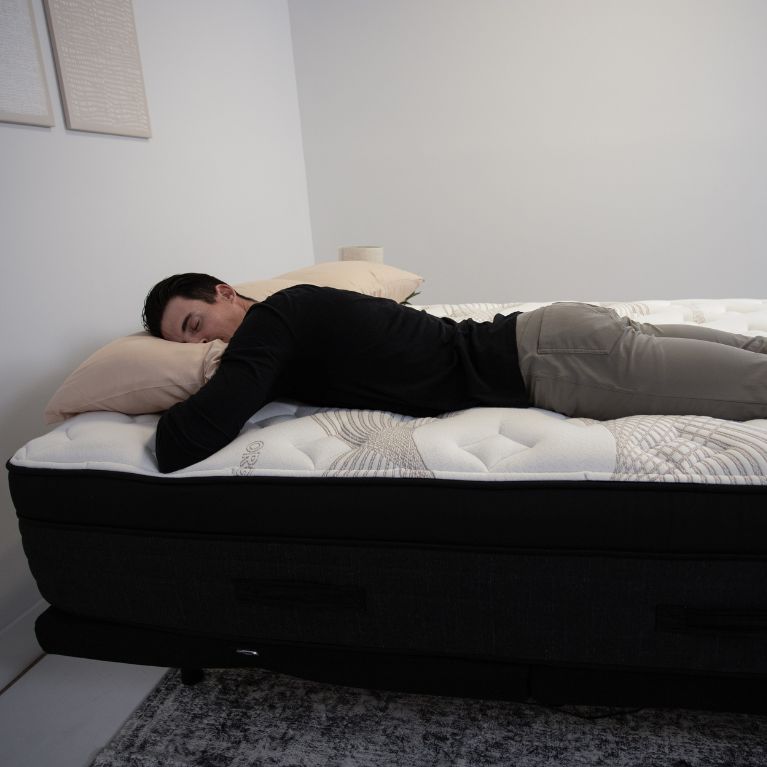
|
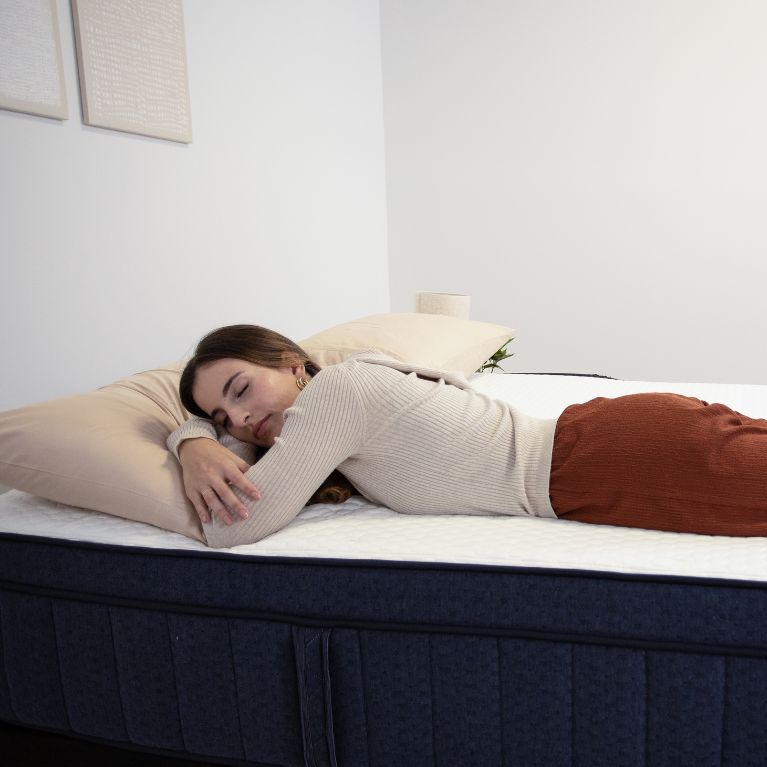
|
|
| Helix Midnight Luxe | Nectar Classic Memory Foam | Saatva RX | DreamCloud Hybrid | Bear Mattress Elite Hybrid | WinkBeds The WinkBed Firm | Nolah Evolution | Brooklyn Bedding Aurora Luxe Cooling | |
| Rating | ||||||||
| Price | $2,373.33 | $1,563 | $3,295 | $1,613 | $2,305 | $1,799 | $2,499 | $1,865 |
| Material | Hybrid (coils and foam) | Foam | Hybrid (coils and foam) | Hybrid (coils and foam) | Hybrid (coils and foam) | Hybrid (coils and foam) | Hybrid (coils and foam) | Hybrid (coils and foam) |
| Firmness | Medium | Medium-firm | Medium-firm | Medium-firm | Soft, medium, firm | Softer, luxury firm, firmer, plus | Plush, luxury firm, firm | Soft, medium, firm |
| Trial Period | 100 nights | 365 nights | 365 nights | 365 nights | 120 nights | 120 nights | 120 nights | 120 nights |
Best mattress for back and neck pain: Helix Midnight Luxe
Pros and cons
Mattress overview
Our advisor’s take
What our testers say
Bottom line
“The Helix Midnight Luxe seems like an excellent choice for managing neck and back pain,” says Dr. Nishi Bhopal, a board-certified doctor in Psychiatry, Sleep Medicine, and Integrative Holistic Medicine. “Its design offers a balanced medium firmness, ideal for side and back sleepers who need both cushioning and support for spinal alignment. Choosing the right mattress isn’t just about comfort—it’s important for your spinal alignment, joint support, and overall sleep quality. Your preferred sleeping position, body temperature, and whether you share the bed are all key factors.”
“For example,” she continues, “side and back sleepers often benefit from a softer mattress to cushion pressure points, while stomach sleepers need a firmer surface to keep their spine aligned and avoid sinking too much, which can strain the back. A mattress that doesn’t match your needs can lead to poor sleep quality, as you’re likely to experience discomfort and wake up with aches and pains. Investing in a mattress that suits your unique sleep preferences can significantly improve how you feel each morning and promote healthier, more restorative rest.”
Our mattress picks go through rigorous evaluation, including subjective input from multiple testers and objective data from tests like pressure mapping, heat retention, and more. Here’s what our product testers had to say about the Helix Midnight Luxe.
“With the medium firmness of this mattress, it feels nice for pressure and pain relief. There isn’t too much pressure from the mattress in any areas while laying on it,” said Jaimie Pearce. But she also noted that the mattress’s motion transfer is less than ideal: “When on the bed, I could feel the motion of the person next to me relatively easily on the mattress.”
“It feels pretty responsive and bouncy,” said Lily Moe. “But I wouldn’t say this is a firm mattress.”
Overall, our testers think this mattress would be best suited for side sleepers, but not stomach sleepers. While they liked the quality of the foam and mattress construction, they also pointed out that “the edges sink easily” and are not very supportive.
As part of Helix’s luxury mattress line, the Midnight Luxe blends the plush cushioning of memory foam with enhanced support from durable steel coils. Its advanced cooling technology prevents overheating, even for the hottest sleepers.
- It offers targeted pressure relief and zoned support, keeping the neck, spine, and hips aligned for reduced pain.
- For a hybrid mattress, it’s on the more expensive side at $2,373.33, and the optional upgrades can further increase the price.
- This mattress’s softness is ideal for side and back sleepers, and its responsiveness makes it easy for combination sleepers to change positions.
- The premium cooling features will help keep hot sleepers cool and comfortable throughout the night.
Best mattress for back pain on a budget: Nectar Classic Memory Foam
Pros and cons
Mattress overview
Our advisor’s take
What our testers say
Bottom line
“Given its affordability, the Nectar Memory Foam mattress could be a good choice for many types of sleepers,” says Bhopal. “Its medium-firmness makes it versatile enough for back and side sleepers, who can benefit from the pressure-relief and spinal alignment to reduce back and neck pain. However, it might be too soft for stomach sleepers. It’s a good idea to test out a mattress first when possible to make sure it’s comfortable for you, as everyone has different needs depending on their sleeping position, temperature preference, and other factors.”
“This mattress would be a great fit for a back sleeper who is looking for a memory foam mattress,” noted Josh Himes, one of our team’s product testers. “It provided enough sinkage to allow for some pressure relief, but also gave enough support to prevent your hips for sinking too low and causing any low back or hip pain.”
“This bed is great for relief around your low back or hips if you are sleeping on your stomach or back, but I would not recommend it for a side sleeper that is looking for shoulder and hip pain relief,” Himes added. “The top layer of foam allows for some sinkage, but the bottom two layers really do provide a ton of support.”
Our testers also found the mattress has great motion isolation, noting they couldn’t feel any movement at all from their partner. The edges are also supportive for a memory foam mattress.
“There is little to no momentum created when sitting on the edge of the bed, which could make it difficult for an older individual to get in and out of this bed,” said Himes.
The Nectar’s foam-over-foam design conforms to the body’s natural shape and helps evenly distribute weight, minimizing pressure buildup that can often cause or worsen back pain. Its soft feel is balanced with a dense base that helps the mattress maintain structure and support.
- It outperforms most hybrid and innerspring mattresses at reducing motion transfer throughout the mattress.
- It is frequently on sale for 40% off, saving you hundreds of dollars on your purchase.
- Our testers felt most comfortable lying on their side and back, noting that their hips sank too much to stay supported when sleeping on their stomach.
- The gel foam helps keep the mattress cooler but may not be enough for excessively hot sleepers.
Best mattress for lumbar support for back pain: Saatva RX
Pros and cons
Mattress overview
Our advisor’s take
Bottom line
Bhopal notes, “The Saatva Rx is designed to provide lumbar support, which is helpful for sleepers with chronic back pain or joint discomfort. This is especially beneficial for back sleepers, who need a mattress that keeps their hips and shoulders aligned, reducing strain on the lower back. Side sleepers may also benefit from the mattress’s balance of support and cushioning, as it supports the shoulders and hips while keeping the spine straight and without creating pressure points.”
Saatva layers its Rx model with unique features designed to target chronic back and joint pain directly. Its comfort and support blend comes from over 1,600 micro coils, zoned lumbar support, and pocketed coils capped with foam modules.
- This mattress delivers an exceptional balance of support and comfort that perfectly cradles the body for optimal spinal alignment.
- You’ll pay top dollar for the signature elements incorporated in this mattress, which exceeds $3,000 when not on sale.
- While ideal for side and back sleepers, stomach sleepers and heavier-weight individuals will benefit from a firmer mattress to keep their hips lifted.
- The organic cotton cover, gel-infused foam, and phase change material help regulate body temperature.
Best mattress for lower back pain: DreamCloud Hybrid
Pros and cons
Mattress overview
Our advisor’s take
What our testers say
Bottom line
“The DreamCloud Hybrid could be a good fit for sleepers with back pain, primarily because of its medium-firm support and the alignment it promotes,” notes Bhopla. “Back pain from a bad mattress is often a result of poor spinal alignment or uneven weight distribution, which can cause pressure to build up in areas like the lower back, neck, or shoulders. This mattress helps address these issues by blending contouring foam layers with supportive coils.”
“This bed does have wrapped coils, and seems very durable. It has good edge support, and a supportive top layer. I feel like this mattress would hold up for years,” said Jaimie Pearce. “I think this would be a good option for those with pressure and pain, as it is firm enough to relieve areas and provide support, and also the contouring effect of the foam feels nice.”
Overall, our mattress testers thought the DreamCloud Hybrid was comfortably firm and supported all the right areas for pain and pressure relief.
“It provides that right cushion, so I feel like my back is aligned with side sleeping,” said Lily Moe. “Your shoulders dip a little bit, I think in a positive way.”
Our testers were also impressed with the overall quality of the mattress, especially its edge support and low motion transfer.
With a combination of comfort memory foam and supportive coils, the DreamCloud Hybrid mattress helps keep the spine aligned and relieves pressure in the neck, back, hips, and shoulders. Its cashmere cover adds a luxurious touch that makes this mattress seem like it should be more expensive than it is.
- With a medium-firm feel, this mattress provides sleepers with generous support.
- Budget-conscious buyers can find this mattress frequently on sale for just $665.
- Couples can benefit from fewer sleep disturbances thanks to this mattress’s superb motion isolation.
- It offers a more temperature-neutral feel instead of being noticeably cooling.
Best mattress for back and hip pain: Bear Mattress Elite Hybrid
Pros and cons
Mattress overview
Our advisor’s take
What our testers say
Bottom line
Per Bhopal, “The Bear Elite Hybrid appears to be a good choice for those experiencing hip pain because of its combination of memory foam and zoned coil support. The design provides pressure relief by contouring to the body, which is essential for reducing discomfort in sensitive areas like the hips. Side sleepers would particularly benefit the most from this mattress because the foam layers help relieve pressure on the hips, which is a common pain point for people who sleep on their side.”
“This is a firmer mattress making it harder to roll off this mattress. The edges are a lot more supportive than other memory foam mattresses,” said Jaimie Pearce. “I think this would be good for people who don’t like typical memory foam mattresses and that ‘hugging’ feeling some styles provide.”
“I think this could be good for pain relief, providing more support than other more memory foam mattresses. The firmness feels like it would take pressure off any pain areas,” Pearce continued.
“I feel like if you had a really sensitive lower back, this could be good for you—if you want to make sure the stability and flatness is there,” said Lily Moe.
Our testers also noted the Bear Elite Hybrid has good edge support and overall stability, making it easy to get up and out of bed or move into different positions. They also rated it one of the best mattresses we’ve tested for low motion transfer, noting they could hardly feel their partner moving around.
The Bear Elite features a hybrid design that merges the spinal support offered by innerspring coils with the luxurious pressure relief provided by multiple layers of adaptive foam. Plus, its copper-infused foam and cooling cover help keep sleepers comfortably cool.
- This mattress provides enhanced support in troublesome areas, especially the hips and back.
- We feel this mattress proves its value with its superior performance, making it worth the higher price of $2,305.
- With advanced cooling technology infused throughout, it’s ideal for hot sleepers.
- Three firmness levels to choose from make it an excellent choice for any sleep style and body type.
Best firm mattress for back pain: WinkBeds The WinkBed Firm
Pros and cons
Mattress overview
Our advisor’s take
Bottom line
“Firm mattresses can be beneficial for people who need more support to maintain proper spinal alignment during sleep,” notes Bhopal. “This includes back sleepers, stomach sleepers, and heavier individuals, who often require firmer support to avoid sinking too deeply into the mattress, which can lead to misalignment and back pain. Side sleepers generally don’t benefit as much from firm mattresses. This is because the firmness can cause pressure points in the hips and shoulders, leading to discomfort or pain. Lighter individuals might also find a firm mattress too rigid, as they may not exert enough weight to get the necessary pressure relief, causing discomfort or even waking up with sore spots.”
The WinkBed Firm’s advanced hybrid construction incorporates a lumbar pad into its foam layers, providing enhanced support for your lower back. Its pocketed coils move independently from each other as they adapt to your body’s curves and offer pressure relief.
- The firmer mattress provides strong support for proper spinal alignment.
- Hybrid mattresses can get expensive, but the WinkBed is one of the more affordable options at $1,799.
- Back, stomach, and heavier sleepers will find this mattress most comfortable.
- The moisture-wicking cover, gel foam, and breathable coils help keep the mattress cool.
Best mattress for back pain for side sleepers: Nolah Evolution
Pros and cons
Mattress overview
Our advisor’s take
What our testers say
Bottom line
“The Nolah Evolution is good for side sleepers because of its ability to provide pressure relief for the shoulders and hips while maintaining proper spinal alignment,” adds Bhopal. “The foam layer helps relieve pressure in areas like the hips and shoulders, which often cause discomfort for side sleepers, while the coils offer lumbar support to prevent the back from sinking too deeply. The hole-punched foam also helps distribute weight more evenly for support. This mattress could also benefit heavier sleepers who need extra support, and sleepers who tend to overheat at night, because of the cooling features. Couples might also benefit because of the motion isolation features.”
“I really liked this for side sleepers. I am a side sleeper and I felt this was a good combination of firmness with the soft top layer,” said Jaimie Pearce. “I do think this mattress does a good combination of lifting and also feeling supportive around pain areas. I think it could be a good option for those with some pain.”
Overall, our testers thought the Nolah Evolution was a high-quality mattress and rated it highly for side sleepers. Though they did note that there was noticeable motion transfer when sleeping with a partner, which may not make it a good option for light sleepers.
The Nolah Evolution employs several proprietary features, including its AirFoam™, HDMax™ Tri-Zone™ coils, and ArcticTex™ fibers, to balance comfort and support while keeping sleepers cool and dry.
- The mattress excels at balancing pressure relief in the shoulders and hips while maintaining solid back support.
- We recommend shopping sales events to help reduce the cost of this mattress, which nears $2,500 at full price.
- Breathable coils and cooling materials help dissipate heat to keep sleepers cool at night.
- An added perforated foam layer increases this mattress’s responsiveness, making it easier to change sleeping positions.
Best cooling mattress for back pain: Brooklyn Bedding Aurora Luxe Cooling
Pros and cons
Mattress overview
Our advisor’s take
What our testers say
Bottom line
“Sleepers who tend to sleep warm due to their room temperature, body type, or climate, could benefit the most from a cooling mattress,” advises Bhopal. “Cooling mattresses are also valuable for couples, as body heat can build up between two people. Additionally, people who wake up frequently due to discomfort from overheating may find a cooling mattress helpful, as better temperature regulation can promote deeper, more restful sleep. If someone is considering a switch to a cooling mattress, they should look for features like breathable materials, heat dispersing features, and a cooling cover fabric. The features in the Brooklyn Bedding Aurora Luxe Cooling mattress appear to meet these needs well.”
“I think this mattress would be great for back sleeping! The mattress would be great for hot sleepers and feels supportive and comfortable while lying on my back,” said Jaimie Pearce.
“We were really taken with the cooling features of this mattress,” said Lily Moe, pointing out that the mattress was notably cool to the touch. However, the mattress received low ratings for edge stability. “Great for hot sleepers, not so good for anyone with mobility issues.”
Overall, the Brooklyn Bedding Aurora Luxe Cooling mattress was rated highly for its cooling features, low motion transfer, and comfort, though it is on the softer side.
“I feel like the materials of this bed are a little less durable than other mattresses. I think this is because it feels softer and there is less edge support, making it seem like it could morph over time with the softer materials,” said Pearce. “This bed would be great for people who like the memory foam feel, but are big on motion transfer. I couldn’t feel any motion transfer, surprisingly.”
Brooklyn Bedding’s Aurora Luxe Cooling mattress excels at temperature regulation, with advanced cooling technology infused throughout. Multiple layers of pressure-relieving foam and zoned coils help keep back pain sufferers comfortable at night.
- This mattress is noticeably cool to the touch and feels airy and breathable.
- Spending over $1,800 on a mattress can seem like a lot, but we feel this mattress is worth it for all it offers.
- With three firmness levels, this mattress offers comfort regardless of your preferred sleep position.
- The elasticity of the CopperFlex™ foam creates a responsive sleep surface that makes position changes effortless.
How we test mattresses for back pain
Every Fortune Recommends ™ mattress review is guided by an experienced team of certified sleep science coaches, industry experts, and real-world consumers. We aim to analyze every mattress we discuss through a variety of physical tests. We evaluate factors like edge support, sinkage, motion isolation, and pressure relief to arrive at a comprehensive assessment. When physical testing insights are not available, we rely on thorough research performed by writers and editors with years of experience in sleep content.
Our proprietary testing methodology ensures each mattress undergoes the same meticulous evaluation so we can provide objective and trustworthy feedback that’s grounded in genuine user experiences. Read our full mattress testing methodology for more information.
Sleep experience – 40%
A high-quality mattress should feel like it’s designed to provide you with the best sleep of your life. It should also deliver on that promise. Our mattress testers assess various factors to reflect the functional aspects of the mattress as well as the user’s sleep experience.
Here’s what we test:
- Temperature regulation
- Motion isolation
- Back pressure relief
- Side pressure relief
Support – 30%
Alongside the sleep experience, comfort and support are just as important for a healthy and restful sleep. A high-quality mattress should assist in providing relief from aches and pains. It should also offer firm edge support, which is especially important for those who need extra stability when getting out of bed or slipping on their shoes.
Here’s what we’re looking for:
- Edge sinkage
- Center sinkage
Customer experience – 15%
Sometimes, the mattress can be great, but if the overall shopping experience wasn’t, that could easily put a sour taste in a user’s mouth. We analyze the purchasing process from start to finish, including what options are available when something goes wrong.
We scrutinize each mattress on the following:
- Warranty
- Sleep trial
- Delivery time
- Customer service
- Mattress weight
Health & safety – 10%
A mattress is more than just a sleeping surface—it’s an environment where you spend a significant portion of your life. We assess critical aspects of mattresses that may directly impact your well-being and peace of mind.
Our factors in this rating include:
- Hypoallergenic materials
- Safety certifications
- Brand reputation
Cost – 5%
Assessing value involves an examination of several key factors that contribute to a mattress’s worth, with price at the forefront. A mattress that’s priced just within reach of its target audience yet surpasses competitors in terms of materials, performance, and support presents a compelling value proposition. The availability of frequent discounts is also factored into our cost assessment.
Bonus points
When a mattress goes above and beyond the factors listed above, we award it with extra points to signify its special status. These features aren’t necessary to create a comfortable, supportive mattress, but they do provide additional value.
Bonus points are added for the following considerations:
- Customization
- Accessory inclusion
- Technology
- Weight supported
Other mattresses for back pain we tried
While testing various mattresses for this roundup, a few fell short of our list for back pain.
- Saatva Loom & Leaf: We ultimately decided that this mattress wasn’t the best option from this brand for offering back pain relief. Our testers noted more sinkage through the lower back compared to the zoned support provided by other models.
- Brooklyn Bedding Signature Hybrid: This mattress’s softer feel didn’t offer as much support as we like to see in mattresses for back pain. This could lead to spinal alignment issues and exacerbated pain in some individuals.
- Silk and Snow Hybrid Plush: While it may be an excellent choice for those who prefer a soft bed, the mattress lacks the support needed to keep the body lifted and aligned.
What is the best type of mattress for back pain?
The best type of mattress for back pain will be the one that feels the most comfortable and supportive to you. Because there are so many variances in how we perceive comfort, your ideal mattress may not be the same as the next person’s. Dr. Harris notes, “A good mattress keeps your spine aligned and fits your sleep position, body type, and personal preferences while also considering your budget, durability, whether you sleep with a partner, and any sleep issues like heat or back pain.”
We’ll break down the different types of mattresses to help you understand which one may suit you.
Hybrid mattresses are typically the most popular choice and make up most of our list as the best for back pain. They offer a wonderful blend of comfort and support as various layers of contouring memory foam are complemented by a solid innerspring core. You’ll often see these mattresses boast zoned support, where they adjust the density of memory foam and the thickness of the coils around the lumbar area to help provide targeted support.
Memory foam mattresses typically offer a slow sinking feel as the mattress adapts to your body’s shape and weight. They can be excellent at relieving pressure around sensitive joints while supporting the natural curvature of your body to help keep your spine aligned.
Dr. Harris states, “As a material, memory foam is gentle, pressure-relieving, and cushiony. It works to relieve tension by contouring to the shape of your body, which is especially ideal for back pain and pressure relief.”
However, you must find the best firmness for your sleep style and body type to ensure you strike the right balance of sinkage and support. Memory foam is also known for its lack of responsiveness, which may make it more challenging to change positions and move around in bed. Additionally, its dense nature often traps heat, which can be a dealbreaker for overly hot sleepers.
Innerspring mattresses may be less popular than the above options for helping alleviate pain, but they can be appropriate for some individuals who prefer a firmer, bouncier sleep surface. The coil structure can offer zoned lumbar support and help distribute body weight to maintain proper spinal alignment. These mattresses are excellent at regulating body temperature and preventing overheating, allowing for better airflow. Unfortunately, they may not offer enough pressure relief for some individuals.
Mattresses to avoid if you have back pain
As we’ve learned throughout this article, mattresses aren’t one size fits all, thanks to variations in personal needs and preferences. That also applies when determining which mattresses are best to avoid.
When you’re suffering from back pain, you need to find balance between comfort and support, so you’ll want to avoid mattresses that feel too firm or soft. An overly firm mattress can lead to pressure buildup in your back and other sensitive areas. Pain and joint discomfort throughout the night can lead to frequent sleep disruptions. Yet, a mattress that is too soft can be just as problematic. The soft, sinking feeling may feel dreamy at first, but if you’re not well-supported, your spine can sink too deeply and become misaligned.
Other sleep tips to improve chronic pain
A mattress can help improve pain, but it’s not the only factor to consider when aiming for a restful and restorative night’s sleep.
Pillows
Like your mattress, you must find a pillow that balances comfort and support to help align your head, neck, and spine. Your ideal pillow will depend on your sleep position and mattress firmness. Typically, side and back sleepers find more comfort in a thicker pillow, while stomach sleepers need a thinner pillow to reduce the strain on their neck and back. Similarly, you can stick to a thinner pillow when sleeping on a firmer mattress. Conversely, a thicker pillow can help fill the bigger gap created by the sinking allowed by softer mattresses.
You can also use pillows to support other body areas and ease strain on the spine. A pillow between the legs when sleeping on your side or under the knees when lying on your back can help improve sleep posture. While you can use regular bed pillows to achieve these posture enhancements, a wedge pillow or knee pillow may be more effective.
Mattress toppers
If upgrading your mattress isn’t in the cards right now, you might consider a mattress topper as another helpful solution. These can also be an excellent option for further customizing a new mattress to meet your needs.
A mattress topper can be especially helpful in adjusting the firmness level of your sleep surface. It can add cushioning for more pressure relief or make it feel firmer to help provide additional support. Some toppers even have enhanced features incorporating zoned lumbar support to target back pain specifically.
Talk to your doctor
Because back pain can significantly disrupt sleep and impact daily activities, it’s always best to consult a medical professional to discuss what you’re experiencing. Your doctor can provide medical advice and help diagnose any underlying conditions that may be contributing to your pain.
Sleep position
How you position yourself, also called your sleep posture, can significantly impact how your back and joints feel throughout the night. As with anything else, you should find what feels most comfortable. However, certain sleeping positions can help reduce pain, while others may exacerbate it. The key is to find proper alignment through your head, shoulders, back, and hips to help keep your spine in a neutral position. (6)
Back
Sleeping on your back can be one of the best ways to reduce the pressure on your spine as you sleep. (6) In this position, your body weight is more evenly distributed to help keep your spine neutral. “Back sleeping for some people is more comfortable and alleviates pressure on the shoulders and hips,” states Dr. Lees. “Often back sleepers are more comfortable with a pillow under their knees to take pressure off their lower back, and {they should} use a slightly thinner pillow that doesn’t push their head too far forward, yet still supports their neck.
Side
Another solid choice for back pain sufferers, sleeping on your side can also help promote proper spinal alignment. “Side sleeping is the most popular sleeping position, and if supported correctly, can be one of the best for preventing back pain,” shares Dr. Lees.
You may need to take a few extra steps in this position to ensure maximum comfort. Experts recommend avoiding the fetal position and stretching out with a slight knee bend. (6) Also, placing a pillow between your legs can help align your hips and spine. You’ll also want to switch sides regularly throughout the night to help reduce pressure buildup and imbalances from favoring one side over the other.
Stomach
Unfortunately, sleeping on your stomach may do more harm than good, flattening your spine and forcing you to crank your neck to one side. (12) Dr. Lees emphasizes this: “Stomach sleeping can put your spine in awkward positions that can cause twisting and increased pressure on spinal joints.” Slowly training yourself to sleep in a new position or spend less time on your stomach can help reduce pain.
How to manage back pain at home
Beyond sleep posture and mattress type, what you do throughout the day’s waking hours can also significantly impact how much back pain and discomfort you experience. We’ve included additional guidance below on how to relieve the pain.
- Stand often: Prolonged sitting can wreak havoc on your back, especially if poor posture increases the stress on your back and neck. You should aim to stand up, walk around, and stretch at least once every half hour for a minute or two. (13) However, standing in the same position for long periods can be equally as detrimental. Again, moving your body, changing positions, and stretching often is best. (14)
- Stay active: Often, our response to pain is to stop moving, but staying active is one of the most important things you can do to help prevent and manage low back pain. (15) That’s not to say you must do high-intensity workouts every day. In fact, walking is a super exercise to help reduce back pain. (16) Additionally, strengthening your core (including your abdominal and back muscles) can help ensure your muscles work well together to protect your back from injuries. (17) Even just keeping up with the activities you love can profoundly impact your mental and physical recovery.
- Manage stress: Back pain can manifest in many ways, and stress can significantly contribute. When you’re feeling anxious or stressed, it can cause muscle tension that can lead to neck and back pain. (17) Practicing mindfulness, meditation, and other relaxation strategies can reduce muscle tension and help you manage the frustration, irritability, and other mental health challenges that can accompany chronic pain. (18)
- Adjust your diet: Foods high in trans fats, sugars, and highly processed ingredients often have an inflammatory effect on the body. A diet high in these types of foods may exacerbate pain. (18) Moreover, maintaining an appropriate weight for your body type can reduce the pressure on your spine. (18) Consider consulting your medical provider or a licensed nutritionist for support in making dietary adjustments to help achieve your goals.
- Engage in therapy: Physical therapy and other alternative therapies can help you work through pain and strengthen crucial muscles that support your back. Consider consulting your doctor for a physical therapy referral, who can guide you through stretches and exercises to manage pain in the clinic and at home. Your provider may also recommend massage therapy or chiropractic care.
- Apply hot and cold therapies: Applying ice for the first 48 to 72 hours after a back injury can help reduce inflammation. After that, heat therapy can help increase blood flow for improved recovery. (19) It’s best to discuss your pain with your doctor before starting any therapy to ensure you treat the root cause appropriately.
- Use proper lifting technique: Avoiding heavy lifting is one the best ways to prevent a back injury from improper lifting technique. Let your legs do most of the work if you must lift something. You should bend at the knees, keep your back straight and chest lifted, and avoid twisting for proper form. Even better, use the buddy system by finding a partner to help you. A team lift can reduce the strain on your back. (17)
- Quit smoking: Smoking and the use of other tobacco products can increase your risk of back pain. These products can cause inflammation, reduce blood flow to the spine, and increase coughing, possibly resulting in herniated discs. (17) Reducing how much tobacco you use or quitting altogether can help improve your condition.
Types of back pain
Almost everyone will experience back pain at some point in their lives, and it’s the most common cause of disability worldwide. (20, 17) The risk increases with age, weight gain, high stress levels, and working jobs that require heavy lifting, pulling, pushing, or prolonged sitting. (17) Additionally, back pain can present in various ways and result from different causes. You should consult your doctor regarding any pain you feel to get a proper diagnosis and treatment plan.
Lower back pain
Lower back pain can occur anywhere between the bottom of your rib cage and the buttock. (20) It can severely impact your quality of life by hindering your ability to work, socialize, and perform daily activities. Sometimes, it results from a specific injury, disease, or spinal problem, but doctors often can’t find a particular reason for the pain. In these cases, it’s called non-specific lower back pain. (20) Common symptoms include dull aching pain, sharp pain, tingling, a burning sensation, or weakness in your legs or feet. (21)
Upper back pain
If you have pain anywhere between the base of your neck and the bottom of your rib cage, you may be experiencing upper back pain. Poor posture, injuries, disk problems, or arthritis typically cause this pain. (22) You may feel sharp, burning, or throbbing pain. It can also cause muscle tightness, stiffness, tingling, numbness, or weakness. (22)
Sciatica
Sciatica often begins in the lower back and expands down the buttock, leg, and calf, sometimes reaching the foot. (23) It’s usually caused by a herniated disk that puts pressure on your sciatic nerve, but it can also result from obesity, poor posture, and other nerve disorders. (24) The pain can feel debilitating, but it can also be prevented in many cases through regular exercise, core strengthening, avoiding sitting for too long, and practicing good posture. (23)
Getting adequate sleep is another important factor in keeping your spine healthy. We encourage you to browse our list of the best mattresses for sciatica to help you narrow down your search.
Arthritis
Arthritis is another common cause of back pain, with osteoarthritis (OA) to blame most of the time. (25) It can impact any part of the spine, but most people feel it in their lower back and sometimes the neck. While the exact cause is unknown, certain factors such as age, weight, previous back injury, and genetics may increase your risk. (25) Besides pain, arthritis can cause stiffness, tenderness, swelling, and grinding when moving. This happens because the cartilage between your joints slowly breaks down, earning it the nickname of “wear and tear” arthritis. (26) Other types of arthritis that can lead to back pain include:
- Rheumatoid arthritis
- Spondyloarthritis
- Psoriatic arthritis
Explore our list of the best mattresses for arthritis for additional options to help ease your pain at night.
FAQs
Is a firm or soft mattress better for back pain?
While some studies indicate that medium-firm mattresses are most effective at reducing back pain, there isn’t one universal mattress type that can solve everyone’s pain issues. (2) Firmness is a subjective measure that varies based on many factors. Your ideal mattress firmness will ultimately depend on your preferences, sleep style, and body type.
What type of mattresses do chiropractors recommend?
The American Chiropractic Association endorses several of the mattresses on our list, including the Saatva Rx, Helix Midnight Luxe, and Bear Elite Hybrid. Overall, chiropractors recommend a mattress that balances comfort and support while helping maintain proper spinal alignment. Because there isn’t one standard mattress that will work for everyone, we recommend talking with your medical provider or chiropractor to help determine which one best suits your needs.
Are memory foam mattresses good for back pain?
As memory foam adapts and conforms to your body, it can relieve pressure on your joints and support the natural curve of your spine, which can help reduce back pain. “For most people, memory foam mattresses provide great support and help alleviate pressure points because the pressure is spread out more evenly,” says Dr. Lees. The key is to choose the right firmness level for your sleep position and body type to ensure your mattress offers an ideal balance of support and sinkage.
How do I know if my mattress is causing my back pain?
If you notice new or worsening pain after sleeping, your mattress may be at least contributing to, if not causing, your back pain. Likewise, if you frequently toss and turn throughout the night or notice your mattress is sagging, it may be a sign that your bed isn’t comfortable or supportive enough to help you rest well.
What type of mattress is best for spinal alignment?
Your mattress should adapt well to your body type and sleep position to help maintain proper spinal alignment. Because we all come in different shapes and sizes and have different sleep preferences, no one mattress can provide universal comfort and support. Consider your unique needs when browsing mattress options, and choose one that has a decent sleep trial so you can try it out risk-free.
Our experts
Soma Mandal
Dr. Mandal is a board-certified internist and one of the top physicians in midlife women’s health. She has helped thousands of women navigate aging and reinvent themselves. Her peers have selected her for Castle Connolly Top Docs, New York Top Doctors, Inside Jersey Top Doctors, and Millburn- Short Hills Super Doctors. Dr. Mandal completed an internship and residency at NYU Langone Medical Center and a prestigious research fellowship in evidence-based medicine at the University of Oxford, England. She practices at a thriving practice in Summit Health, New Jersey.
Nishi Bhopal, MD
Nishi Bhopal, MD, is board-certified in Psychiatry, Sleep Medicine, and Integrative Holistic Medicine. She graduated from the University College Cork School of Medicine, completed her Psychiatric residency at Henry Ford Health System, and completed a fellowship in Sleep Medicine at Harvard Medical School. She is the founder and medical director of Pacific Integrative Psychiatry, an online practice in California that offers a whole-person approach to anxiety and sleep disorders, including nutrition, psychotherapy, sleep coaching, and integrative and functional medicine.
Krista Manning
Krista Manning is an accomplished medical copy editor and fact-checker who stands out in the pharmaceutical, health, and wellness domains. With a meticulous eye for detail and a command of medical language, Krista ensures the accuracy and clarity of content. Beyond her professional expertise, Krista is an advocate for mental health awareness. Recognizing the crucial intersection of psychological and physical well-being, she actively contributes to projects that promote mental health awareness within the healthcare narrative. Krista’s commitment extends beyond the pages she edits, emphasizing the holistic nature of health communication.

Corey Jungwirth, NBC-HWC
Fortune Recommends Staff Writer
About Author
Corey Jungwirth is a National Board Certified Health & Wellness Coach with over 11 years of experience working in health and wellness. Additionally, she has earned certifications as a Behavioral Health Coach and Lifestyle Medicine Coach. For over five years, Corey has enjoyed combining her wellness knowledge with her passion for writing. When she’s not writing about it, Corey enjoys engaging in her own health by running, taking Peloton classes, and playing soccer and volleyball. She also enjoys spending time with her family, reading, and being outdoors as often as possible. Corey lives in a cozy home in the woods in Wisconsin with her two kids, husband, and dog, Kona.
References
- Skarpsno, E. S., Nilsen, T. I. L., & Mork, P. J. (2021b). The effect of long-term poor sleep quality on risk of back-related disability and the modifying role of physical activity. Scientific Reports, 11(1). https://doi.org/10.1038/s41598-021-94845-7
- Caggiari, G., Talesa, G. R., Toro, G., Jannelli, E., Monteleone, G., & Puddu, L. (2021). What type of mattress should be chosen to avoid back pain and improve sleep quality? Review of the literature. Journal of orthopaedics and traumatology : official journal of the Italian Society of Orthopaedics and Traumatology , 22 (1), 51. https://doi.org/10.1186/s10195-021-00616-5
- Good sleeping posture helps your back – Health Encyclopedia – University of Rochester Medical Center. (n.d.). https://www.urmc.rochester.edu/encyclopedia/content.aspx?ContentTypeID=1&ContentID=4460
- CertiPUR-US. (2024, April 23). Home – CertiPUR-US. https://certipur.us/
- Harvard Health. (2022a, February 2). Say “good night” to neck pain. https://www.health.harvard.edu/pain/say-good-night-to-neck-pain
- Cleveland Clinic. (2024, April 30). Best sleeping positions for pain. https://health.clevelandclinic.org/best-sleeping-positions-for-pain
- Gordon, I. L., Casden, S., Vangel, M., & Hamblin, M. R. (2019). Effect of Shirts with 42% Celliant™ Fiber on tcPO2 Levels and Grip Strength in Healthy Subjects: A Placebo-controlled Clinical Trial. Journal of textile science & engineering, 9(4), 403. https://pmc.ncbi.nlm.nih.gov/articles/PMC8351537/
- Cary, D., Jacques, A., & Briffa, K. (2021). Examining relationships between sleep posture, waking spinal symptoms and quality of sleep: A cross sectional study. PloS one, 16(11), e0260582. https://doi.org/10.1371/journal.pone.0260582
- Troynikov, O., Watson, C. G., & Nawaz, N. (2018). Sleep environments and sleep physiology: A review. Journal of thermal biology , 78 , 192–203. https://doi.org/10.1016/j.jtherbio.2018.09.012
- Harvard Health. (2021, February 12). What type of mattress is best for people with low back pain? https://www.health.harvard.edu/pain/what-type-of-mattress-is-best-for-people-with-low-back-pain
- Farmer, J. (2018, February 5). The right bed for your BMI. Better Sleep Council | Start Every Day With a Good Night’s Sleep. https://bettersleep.org/blog/the-right-bed-for-your-bmi/
- Salamon, M. (2022, August 1). Not-so-sweet slumber. Harvard Health. https://www.health.harvard.edu/staying-healthy/not-so-sweet-slumber
- Ergonomics for prolonged sitting. (n.d.). UCLA Health. https://www.uclahealth.org/medical-services/spine/patient-resources/ergonomics-prolonged-sitting
- Taking care of your back at home: MedlinePlus Medical Encyclopedia. (n.d.). https://medlineplus.gov/ency/article/002119.htm
- Institute for Quality and Efficiency in Health Care (IQWiG). (2019, February 14). Low back pain: Learn More – Why movement is so important for back pain. InformedHealth.org – NCBI Bookshelf. https://www.ncbi.nlm.nih.gov/books/NBK284944/
- Pocovi, N. C., Pocovi, N. C., Pocovi, N. C., Pocovi, N. C., Pocovi, N. C., Pocovi, N. C., Pocovi, N. C., Pocovi, N. C., Pocovi, N. C., Pocovi, N. C., Pocovi, N. C., & Pocovi, N. C. (2024). Effectiveness and cost-effectiveness of an individualised, progressive walking and education intervention for the prevention of low back pain recurrence in Australia (WalkBack): a randomised controlled trial. The Lancet. https://doi.org/10.1016/s0140-6736(24)00755-4
- Back pain – Symptoms and causes. (n.d.). Mayo Clinic. https://www.mayoclinic.org/diseases-conditions/back-pain/symptoms-causes/syc-20369906
- 7 ways to treat chronic back pain Without surgery. (2024, July 3). Johns Hopkins Medicine. https://www.hopkinsmedicine.org/health/conditions-and-diseases/back-pain/7-ways-to-treat-chronic-back-pain-without-surgery
- Harvard Health. (2023, July 7). Home remedies for low back pain. https://www.health.harvard.edu/pain/home-remedies-for-low-back-pain
- Branch, N. S. C. a. O. (2023, December 27). Back pain. National Institute of Arthritis and Musculoskeletal and Skin Diseases. https://www.niams.nih.gov/health-topics/back-pain
- Low back pain – chronic: MedlinePlus Medical Encyclopedia. (n.d.). https://medlineplus.gov/ency/article/007422.htm
- Upper back pain. (2024, August 26). Cleveland Clinic. https://my.clevelandclinic.org/health/symptoms/22866-upper-back-pain
- Harvard Health. (2024, August 26). Preventing and coping with sciatica. https://www.health.harvard.edu/pain/5-tips-for-coping-with-sciatica
- Sciatica. (2021, August 8). Johns Hopkins Medicine. https://www.hopkinsmedicine.org/health/conditions-and-diseases/sciatic
- Osteoarthritis of the Back/Spine. (n.d.). https://www.arthritis.org/health-wellness/about-arthritis/understanding-arthritis/back-oa
- Spinal arthritis (Arthritis in the back or neck). (2024, March 12). Johns Hopkins Medicine. https://www.hopkinsmedicine.org/health/conditions-and-diseases/spinal-arthritis

